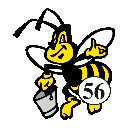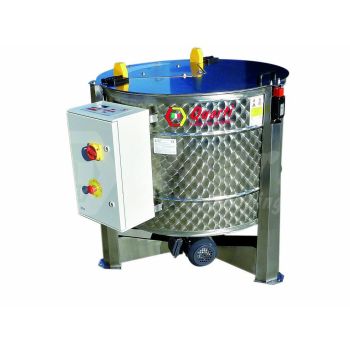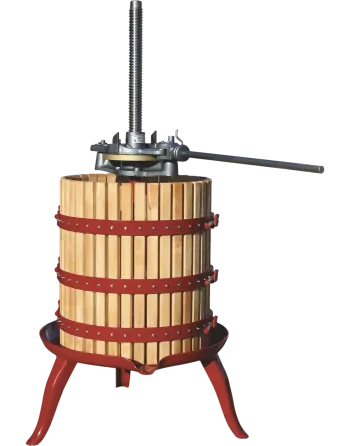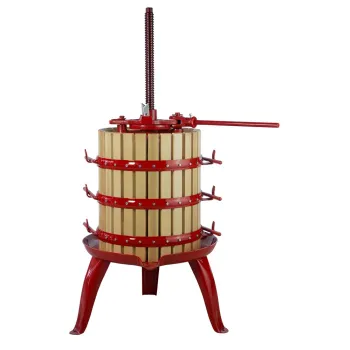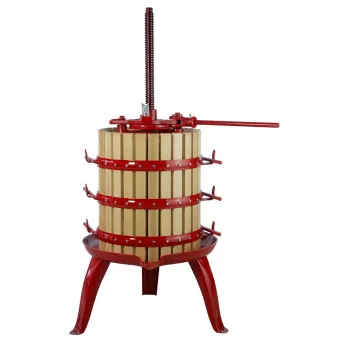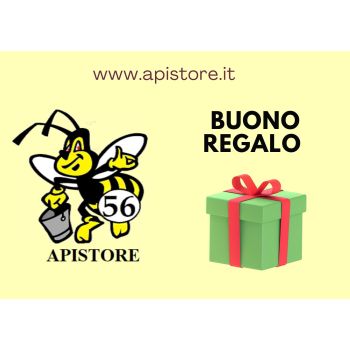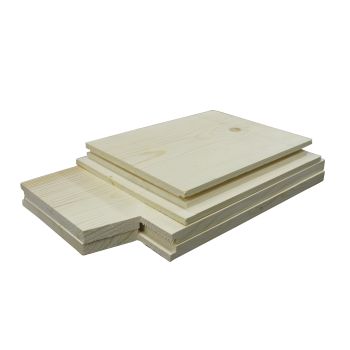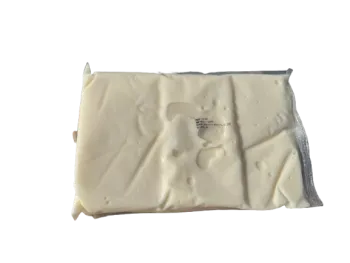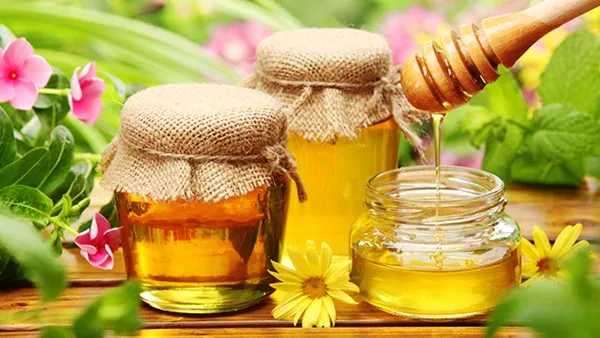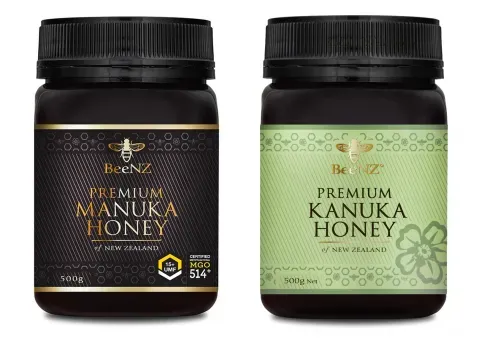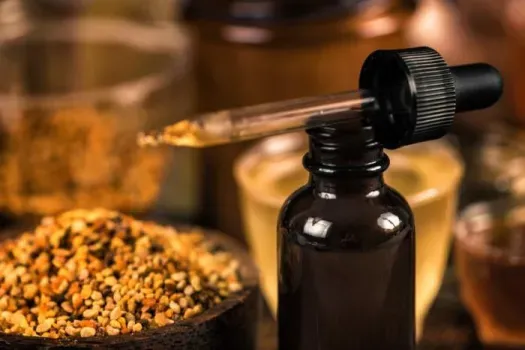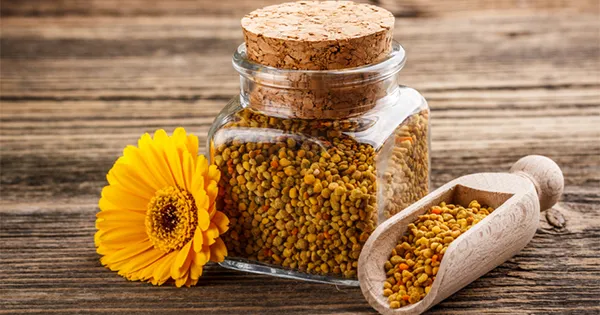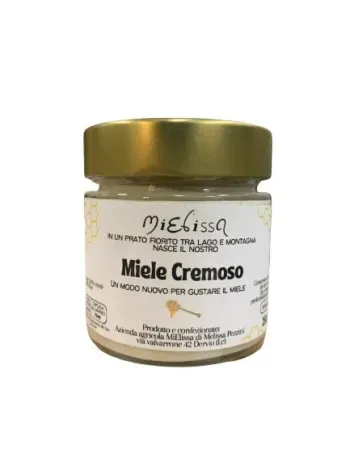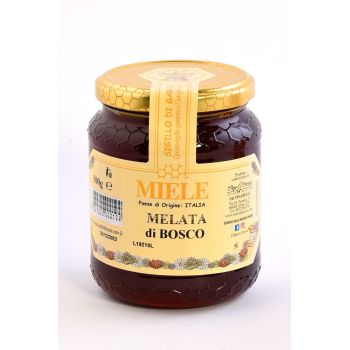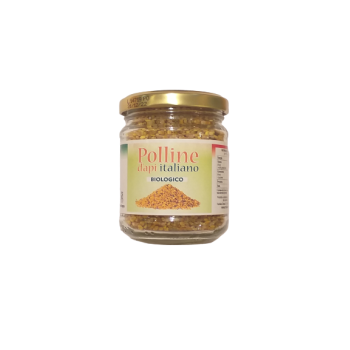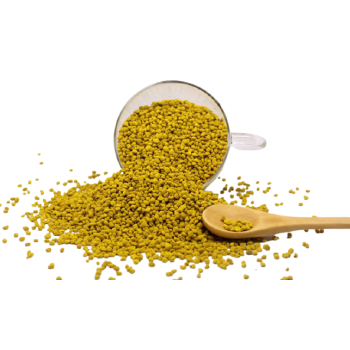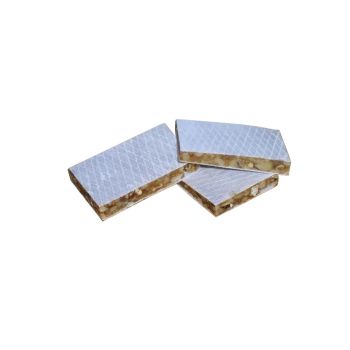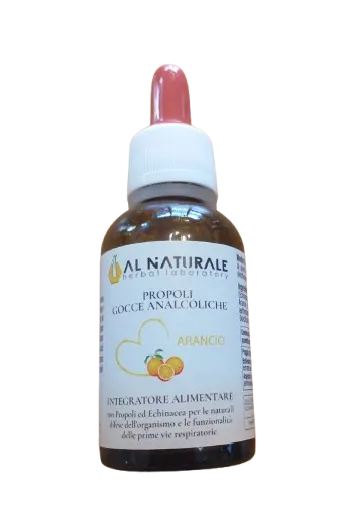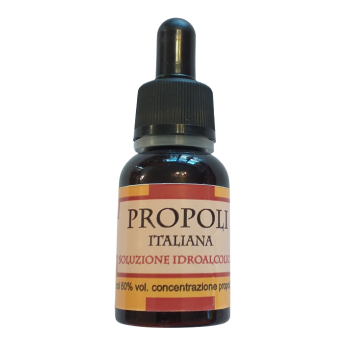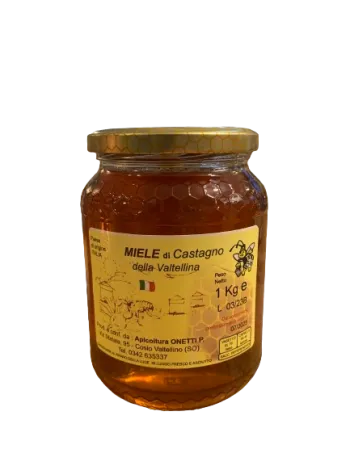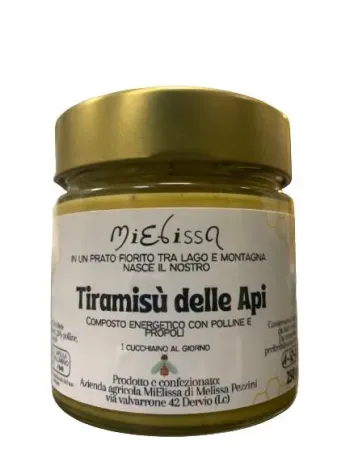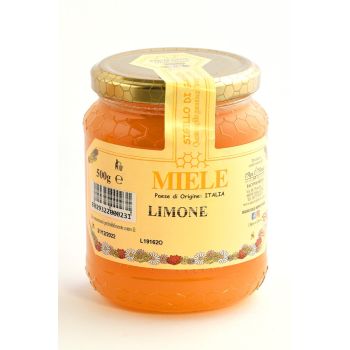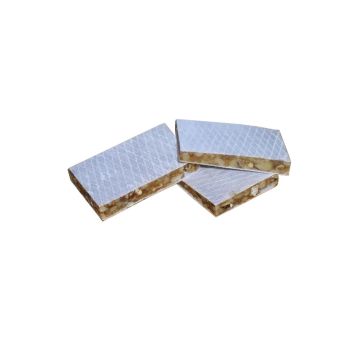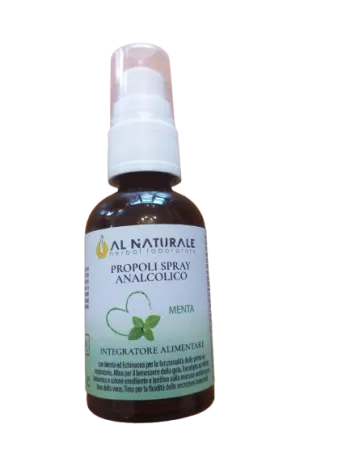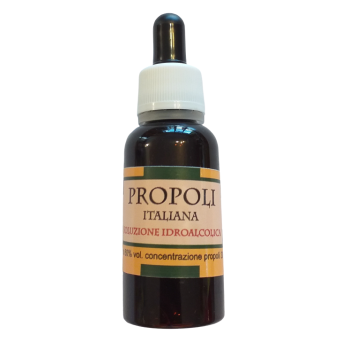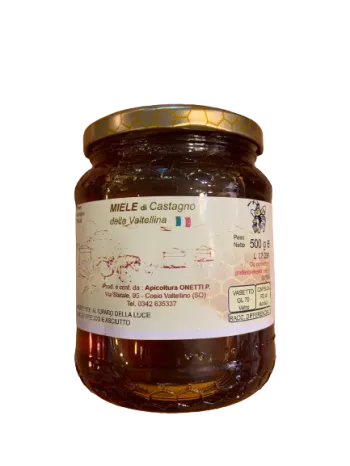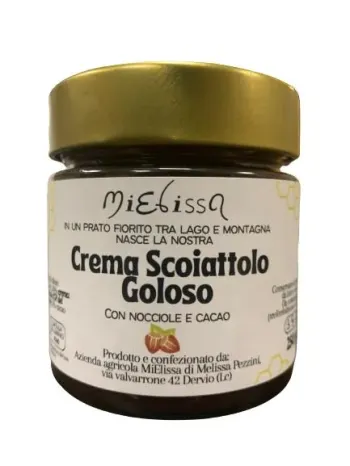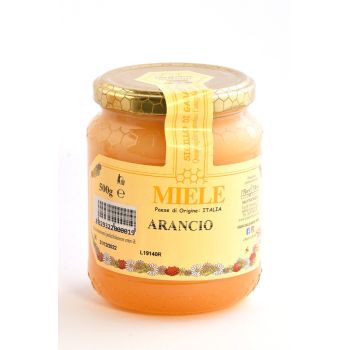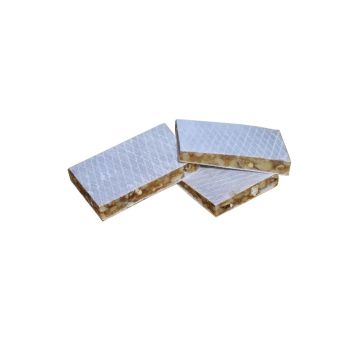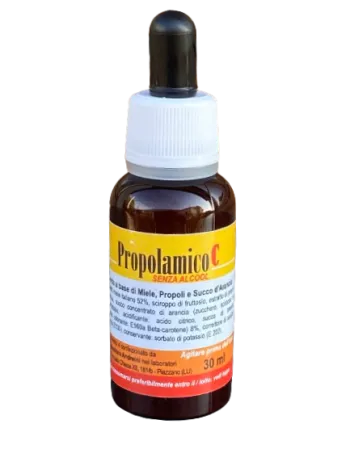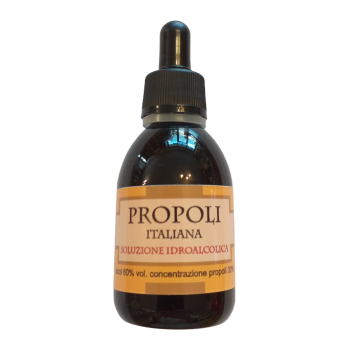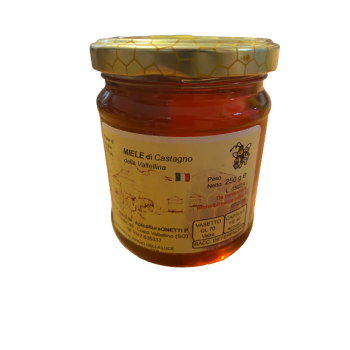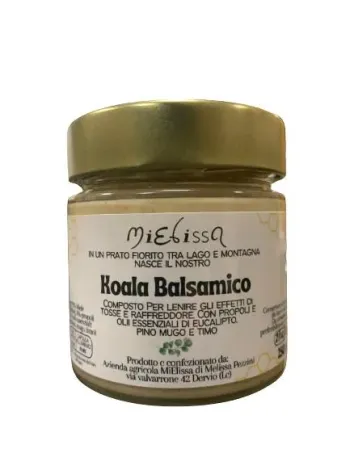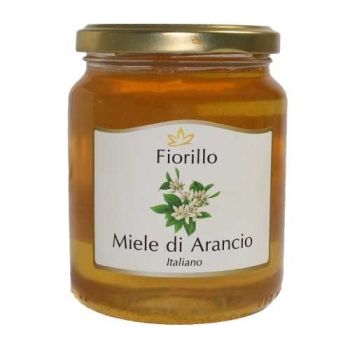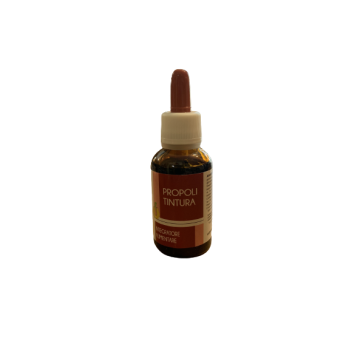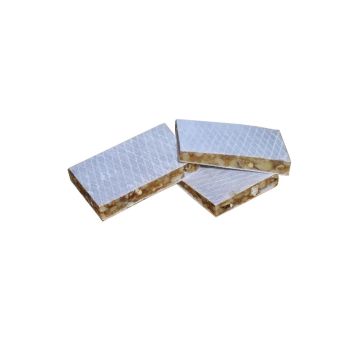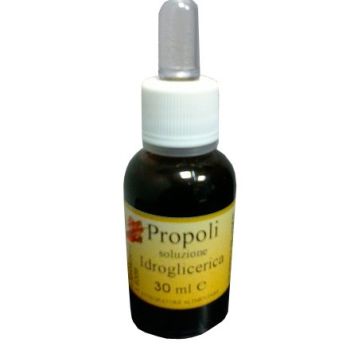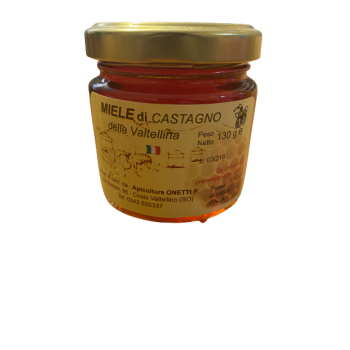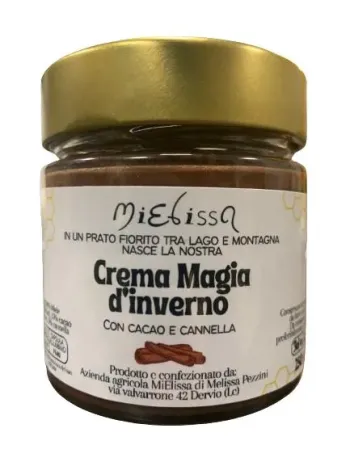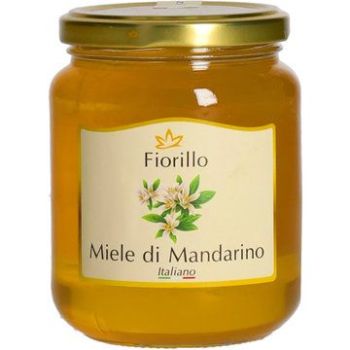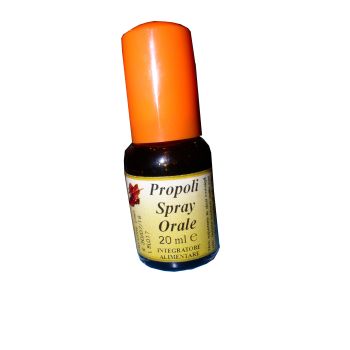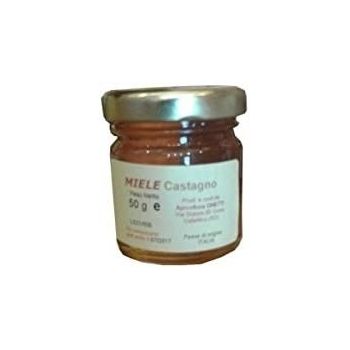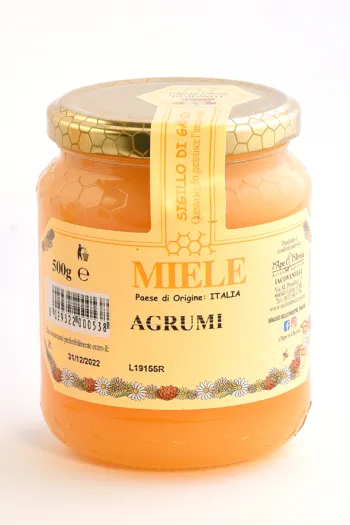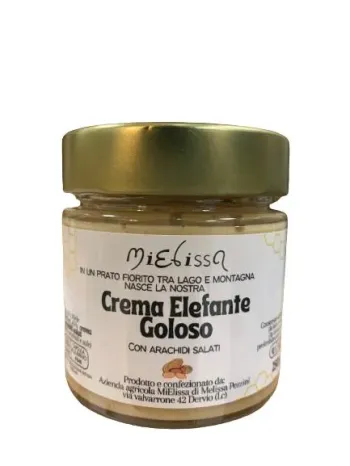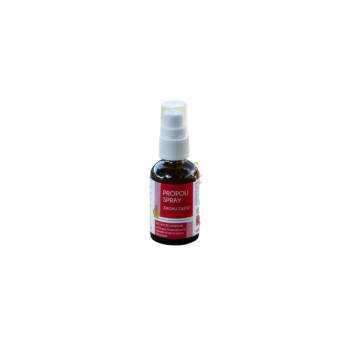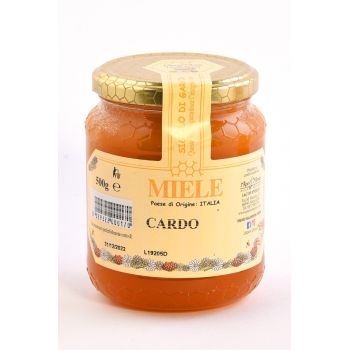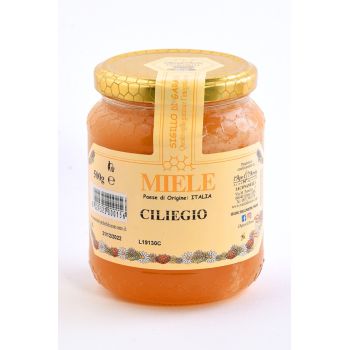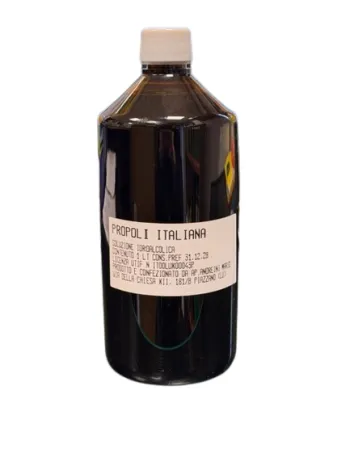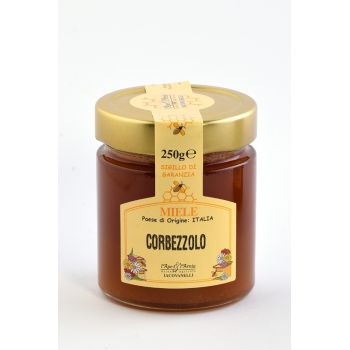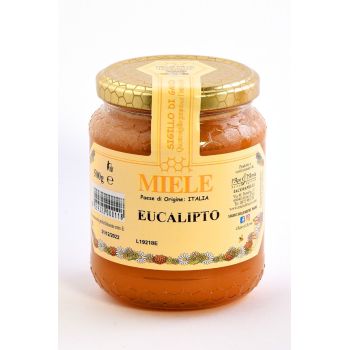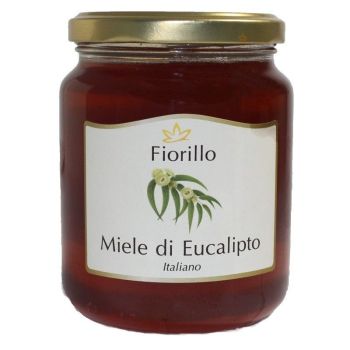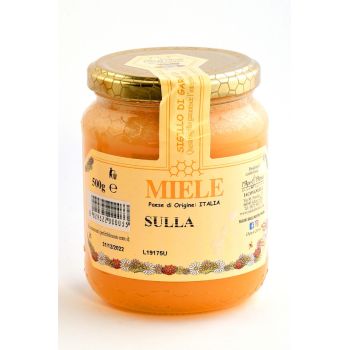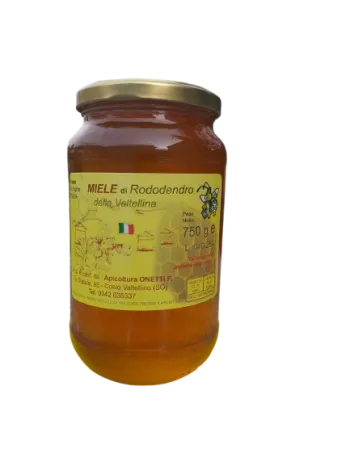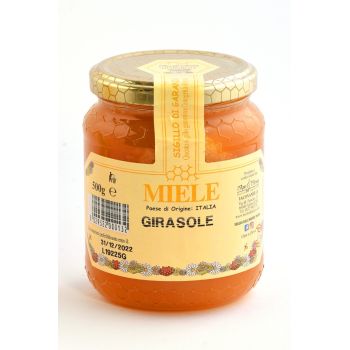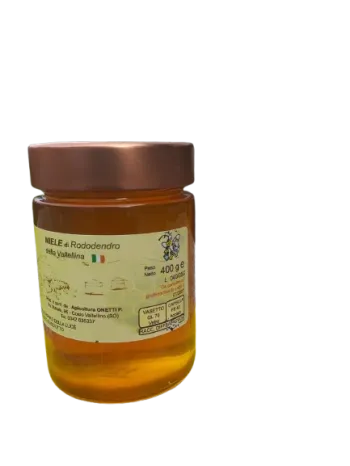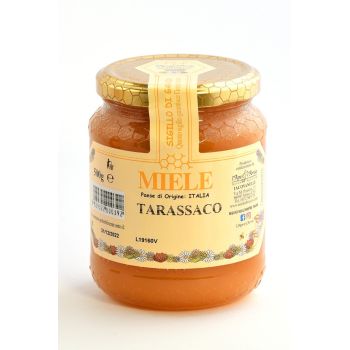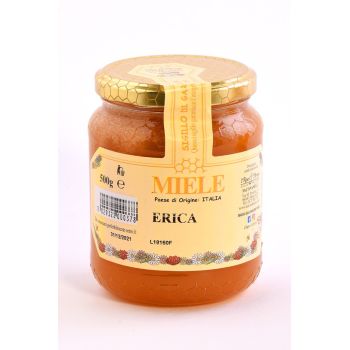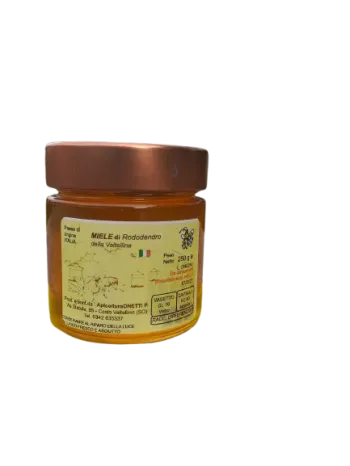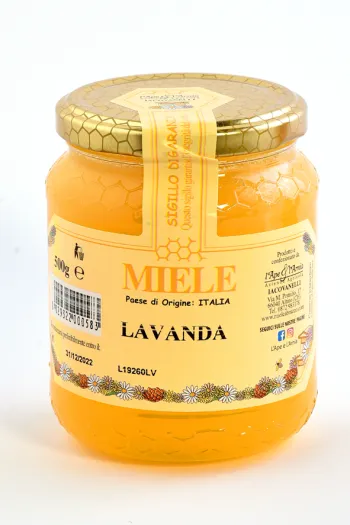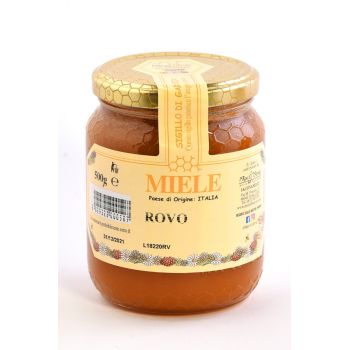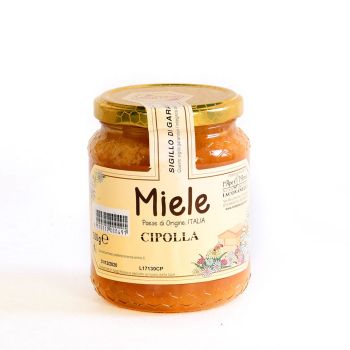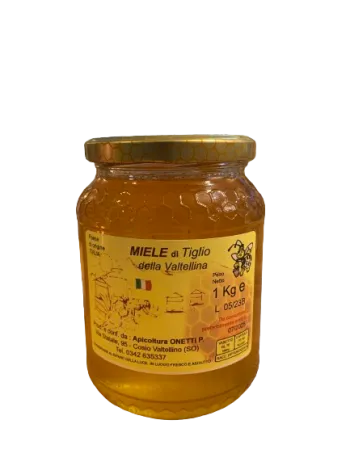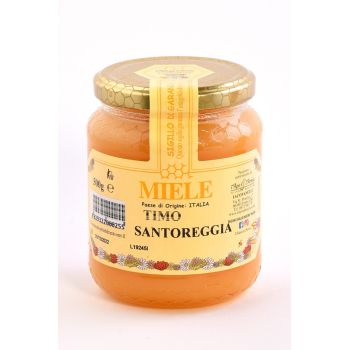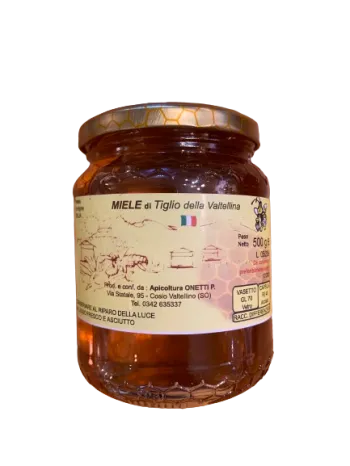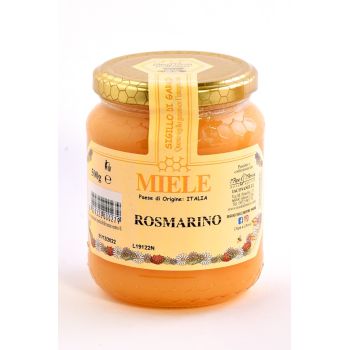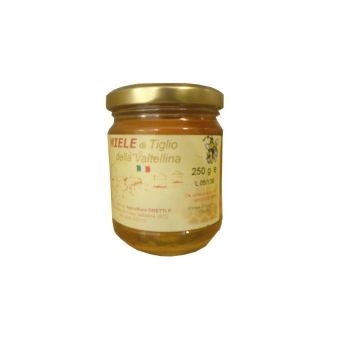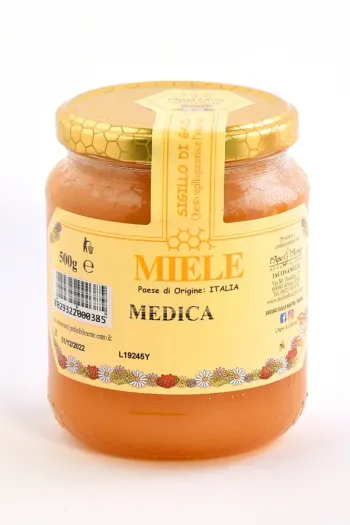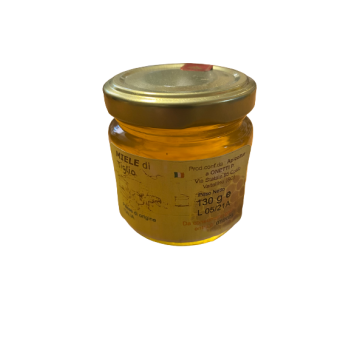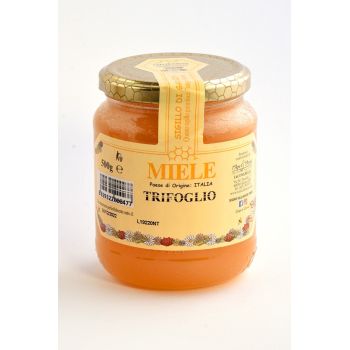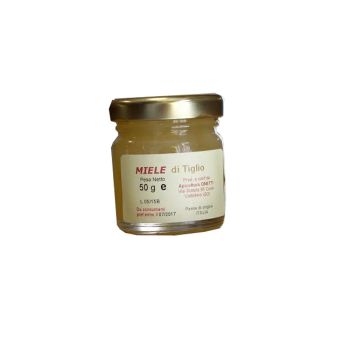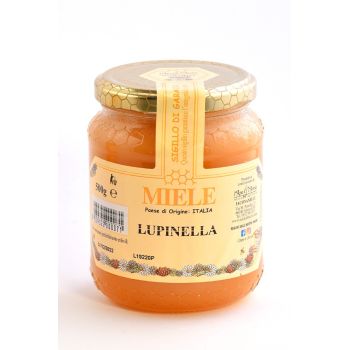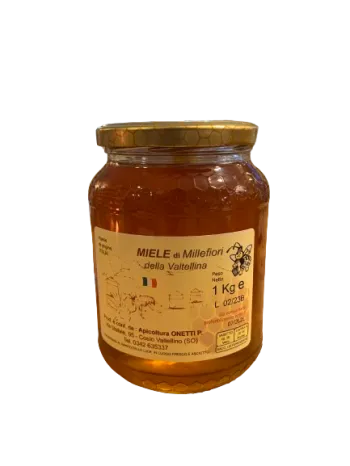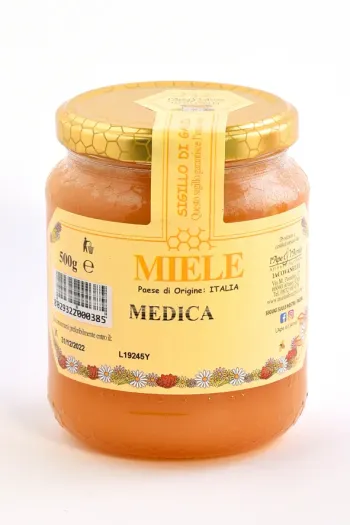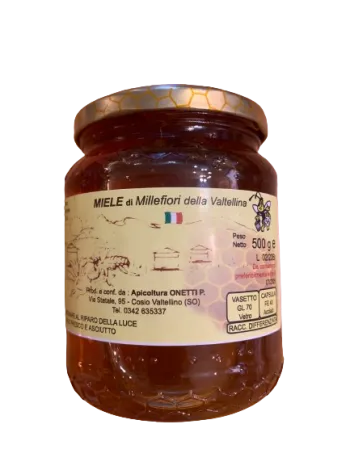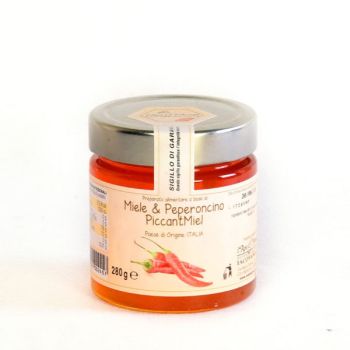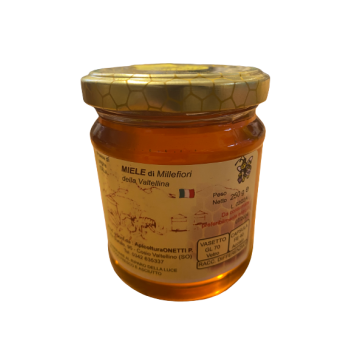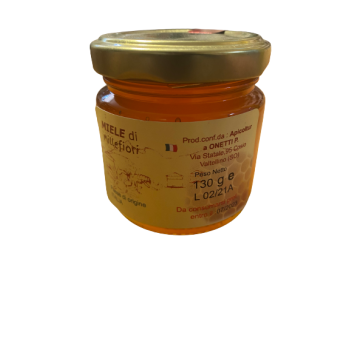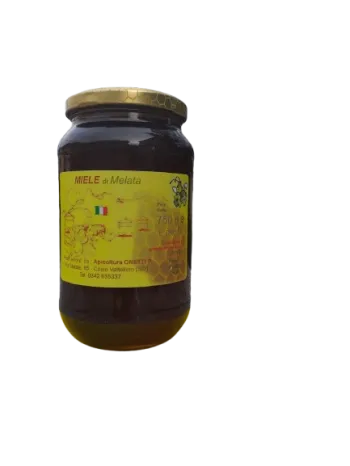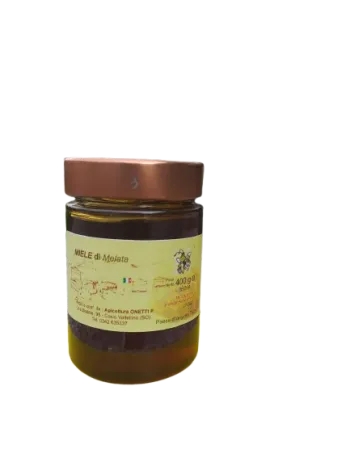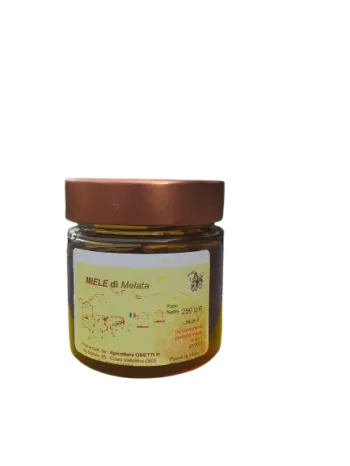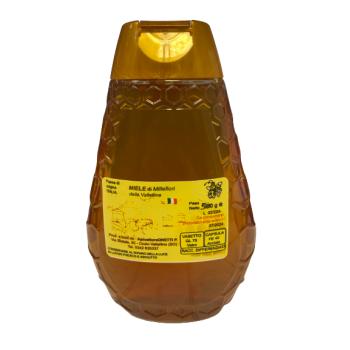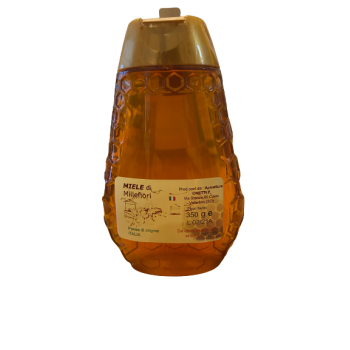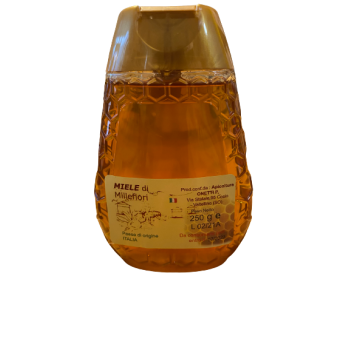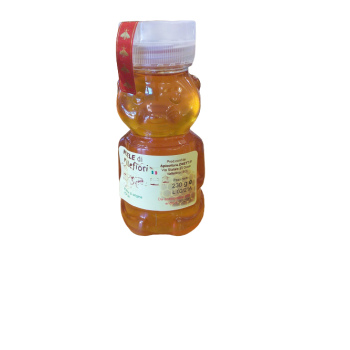Natural honey and other hive products
The honey is processed in such a way as to break up the crystals and block crystallization. This method keeps the properties of honey intact and makes it creamy, spreadable and not "sticky."
The honey is processed in such a way as to break up the crystals and block crystallization. This method keeps the properties of honey intact and makes it creamy, spreadable and not "sticky."
Mixed flower honey processed for 48 hours by a machine that makes it frothy and spreadable. Weight 250 g or 400 g Extracted, prepared and packaged by cold process. ITALIAN HONEY produced in the Orobic area - Lombardy
Mixed flower honey processed for 48 hours by a machine that makes it frothy and spreadable. Weight 250 g or 400 g Extracted, prepared and packaged by cold process. ITALIAN HONEY produced in the Orobic area - Lombardy
Mixed flower honey processed for 48 hours by a machine that makes it frothy and spreadable. Weight 250 g or 400 g Extracted, prepared and packaged by cold process. ITALIAN HONEY produced in the Orobic area - Lombardy
Honeydew is the only honey not of floral origin; in fact, it takes its name from the Metcalfa pruinosa (an insect) that, feeding on plant sap, expels the sugary part which is then collected by bees. The honey remains liquid for a long time presenting a dark color tending to black. The smell has vegetal and fruity notes of cooked fruit while the taste is not very sweet, medium intensity and reminiscent of molasses, dates or fig jam. Packaging in 500 g or 1 kg jars.
Honeydew is the only honey not of floral origin; in fact, it takes its name from the Metcalfa pruinosa (an insect) that, feeding on plant sap, expels the sugary part which is then collected by bees. The honey remains liquid for a long time presenting a dark color tending to black. The smell has vegetal and fruity notes of cooked fruit while the taste is not very sweet, medium intensity and reminiscent of molasses, dates or fig jam. Packaging in 500 g or 1 kg jars.
Honeydew is the only honey not of floral origin; in fact, it takes its name from the Metcalfa pruinosa (an insect) that, feeding on plant sap, expels the sugary part which is then collected by bees. The honey remains liquid for a long time presenting a dark color tending to black. The smell has vegetal and fruity notes of cooked fruit while the taste is not very sweet, medium intensity and reminiscent of molasses, dates or fig jam. Packaging in 500 g or 1 kg jars.
ORGANIC DRY FLOWER POLLEN 125 g Country of origin: ITALY Pollen is used in phytotherapy as a restorative because it is a complete food. Rich in proteins (6-30%); amino acids (15-22%); lipids (1-10%); unsaturated fatty acids and sterols; carbohydrates(up to 50% in the dry state); simple sugars (4-10%); water (12-20%); vitamins (vit.C, A, ac.pantothenic, ac.folic, B complex); enzymes;hormones; antibiotic factors; mineral salts (iron, calcium, magnesium potassium and zinc) and flavonoids. In its cell nucleus, pollen holds the secret of life: the DNA and RNA molecules that establish the vital function of all cells. Thanks to these substances it strengthens and nourishes the entire organism, combats states of mental and physical fatigue proving to be an excellent adaptogen and antioxidant. Used by athletes to increase resistance to fatigue and muscular exertion, it finds use in the physical activity of sportsmen for the supply of carbohydrates and lipids but above all as a source of protein and essential amino acids, superior to those of meat, eggs and cheese, which justify the tonic, anabolic properties given by the presence of 20 of the 22 amino acids used by the human body.
ORGANIC DRY FLOWER POLLEN 125 g Country of origin: ITALY Pollen is used in phytotherapy as a restorative because it is a complete food. Rich in proteins (6-30%); amino acids (15-22%); lipids (1-10%); unsaturated fatty acids and sterols; carbohydrates(up to 50% in the dry state); simple sugars (4-10%); water (12-20%); vitamins (vit.C, A, ac.pantothenic, ac.folic, B complex); enzymes;hormones; antibiotic factors; mineral salts (iron, calcium, magnesium potassium and zinc) and flavonoids. In its cell nucleus, pollen holds the secret of life: the DNA and RNA molecules that establish the vital function of all cells. Thanks to these substances it strengthens and nourishes the entire organism, combats states of mental and physical fatigue proving to be an excellent adaptogen and antioxidant. Used by athletes to increase resistance to fatigue and muscular exertion, it finds use in the physical activity of sportsmen for the supply of carbohydrates and lipids but above all as a source of protein and essential amino acids, superior to those of meat, eggs and cheese, which justify the tonic, anabolic properties given by the presence of 20 of the 22 amino acids used by the human body.
DRY flower POLLEN 125/250/500 g from ORGANIC beekeeping PRODUCED IN ITALY
DRY flower POLLEN 125/250/500 g from ORGANIC beekeeping PRODUCED IN ITALY
DRY flower POLLEN 125/250/500 g from ORGANIC beekeeping PRODUCED IN ITALY
Pollen is used in phytotherapy as a restorative because it is a complete food. It is rich in proteins (6-30%); amino acids (15-22%); lipids (1-10%); unsaturated fatty acids and sterols; carbohydrates(up to 50% in the dry state); simple sugars (4-10%); water (12-20%); vitamins (vit.C, A, ac. pantothenic, ac. folic, B complex); enzymes; hormones; antibiotic factors; mineral salts (iron, calcium, magnesium potassium and zinc) and flavonoids. In its cell nucleus, pollen holds the secret of life: the DNA and RNA molecules that establish the vital function of all cells. Thanks to these substances it strengthens and nourishes the entire organism, combats states of mental and physical fatigue proving to be an excellent adaptogen and antioxidant. Used by athletes to increase resistance to fatigue and muscular exertion, it finds use in the physical activity of sportsmen for the supply of carbohydrates and lipids but above all as a source of protein and essential amino acids, superior to those of meat, eggs and cheese, which justify the tonic, anabolic properties given by the presence of 20 of the 22 amino acids used by the human body.
Pollen is used in phytotherapy as a restorative because it is a complete food. It is rich in proteins (6-30%); amino acids (15-22%); lipids (1-10%); unsaturated fatty acids and sterols; carbohydrates(up to 50% in the dry state); simple sugars (4-10%); water (12-20%); vitamins (vit.C, A, ac. pantothenic, ac. folic, B complex); enzymes; hormones; antibiotic factors; mineral salts (iron, calcium, magnesium potassium and zinc) and flavonoids. In its cell nucleus, pollen holds the secret of life: the DNA and RNA molecules that establish the vital function of all cells. Thanks to these substances it strengthens and nourishes the entire organism, combats states of mental and physical fatigue proving to be an excellent adaptogen and antioxidant. Used by athletes to increase resistance to fatigue and muscular exertion, it finds use in the physical activity of sportsmen for the supply of carbohydrates and lipids but above all as a source of protein and essential amino acids, superior to those of meat, eggs and cheese, which justify the tonic, anabolic properties given by the presence of 20 of the 22 amino acids used by the human body.
FRESH-FLOWER POLLINE in 200 g trays - For storage, the product must be kept at a temperature of -20 °C (Freezer) POLLINE is harvested, cleaned and immediately stored at a temperature of -20 °C This way it retains its properties almost unchanged ! - The cold chain can be interrupted for 6-8 hours DELIVERY with REFRIGERATED TRANSPORT.
FRESH-FLOWER POLLINE in 200 g trays - For storage, the product must be kept at a temperature of -20 °C (Freezer) POLLINE is harvested, cleaned and immediately stored at a temperature of -20 °C This way it retains its properties almost unchanged ! - The cold chain can be interrupted for 6-8 hours DELIVERY with REFRIGERATED TRANSPORT.
FRESH-FLOWER POLLINE in 200 g trays - For storage, the product must be kept at a temperature of -20 °C (Freezer) POLLINE is harvested, cleaned and immediately stored at a temperature of -20 °C This way it retains its properties almost unchanged ! - The cold chain can be interrupted for 6-8 hours DELIVERY with REFRIGERATED TRANSPORT.
COPPETTA VALTELLINESE, net weight 100g Produced and packaged by :Apicoltura ONETTI P. Via Statale ,95 Cosio Valtellino (SO)- Tel. 0342 635337 Country of origin :ITALY Storage conditions: store at room temperature in a dry place DOCUMENT ATTACHED IN SECTION (DOWNLOAD)
COPPETTA VALTELLINESE, net weight 100g Produced and packaged by :Apicoltura ONETTI P. Via Statale ,95 Cosio Valtellino (SO)- Tel. 0342 635337 Country of origin :ITALY Storage conditions: store at room temperature in a dry place DOCUMENT ATTACHED IN SECTION (DOWNLOAD)
VALTELLINESE COPPETTA 100 g - TYPICAL VALTELLINESE PRODUCT INGREDIENTS: honey, walnuts, wafer - Contains potentially allergenic substances (Walnuts)
VALTELLINESE COPPETTA 100 g - TYPICAL VALTELLINESE PRODUCT INGREDIENTS: honey, walnuts, wafer - Contains potentially allergenic substances (Walnuts)
VALTELLINESE COPPETTA 100 g - TYPICAL VALTELLINESE PRODUCT INGREDIENTS: honey, walnuts, wafer - Contains potentially allergenic substances (Walnuts)
Propolis non-alcoholic drops, 30 ml. Ingredients: fructose syrup, PROPOLIS concentrated non-alcoholic extract titrated to total flavonoids expressed as Galangin 5.3%; ECHINACEA (Echinacea angustifolia) concentrated non-alcoholic extract, orange flavor. Manner of use: 40 drops daily dispersed over honey, in water or as is directly in the mouth. WARNINGS: do not take during pregnancy. Do not exceed recommended doses. Supplements should not be intended as a substitute for a varied diet.
Propolis non-alcoholic drops, 30 ml. Ingredients: fructose syrup, PROPOLIS concentrated non-alcoholic extract titrated to total flavonoids expressed as Galangin 5.3%; ECHINACEA (Echinacea angustifolia) concentrated non-alcoholic extract, orange flavor. Manner of use: 40 drops daily dispersed over honey, in water or as is directly in the mouth. WARNINGS: do not take during pregnancy. Do not exceed recommended doses. Supplements should not be intended as a substitute for a varied diet.
Propolis non-alcoholic drops, 30 ml. Dietary supplement with Propolis useful for promoting the body's physiological defenses, relief and well-being of the oral cavity. SEE QUANTITY DISCOUNT
Propolis non-alcoholic drops, 30 ml. Dietary supplement with Propolis useful for promoting the body's physiological defenses, relief and well-being of the oral cavity. SEE QUANTITY DISCOUNT
Propolis non-alcoholic drops, 30 ml. Dietary supplement with Propolis useful for promoting the body's physiological defenses, relief and well-being of the oral cavity. SEE QUANTITY DISCOUNT
Properties: it is known for its healing, antioxidant, immune-stimulating, anesthetic, and anti-inflammatory properties and is considered a true natural antibiotic. USAGE: 15-20 drops dispersed in a little water, honey or sugar, 2 or 3 times a day.
Properties: it is known for its healing, antioxidant, immune-stimulating, anesthetic, and anti-inflammatory properties and is considered a true natural antibiotic. USAGE: 15-20 drops dispersed in a little water, honey or sugar, 2 or 3 times a day.
Italian propolis hydroalcoholic solution, contents 20 ml.Alcohol 60% vol, propolis concentration 30%. SEE DISCOUNT QUANTITIES.
Italian propolis hydroalcoholic solution, contents 20 ml.Alcohol 60% vol, propolis concentration 30%. SEE DISCOUNT QUANTITIES.
Italian propolis hydroalcoholic solution, contents 20 ml.Alcohol 60% vol, propolis concentration 30%. SEE DISCOUNT QUANTITIES.
The honey is processed in such a way as to break up the crystals and block crystallization. This method keeps the properties of honey intact and makes it creamy, spreadable and not "sticky."
The honey is processed in such a way as to break up the crystals and block crystallization. This method keeps the properties of honey intact and makes it creamy, spreadable and not "sticky."
Mixed flower honey creamy energy compound with pollen and propolis - Weight 250 gExtracted, produced and packaged by cold process ITALIAN HONEY produced in the Orobic area - Lombardy
Mixed flower honey creamy energy compound with pollen and propolis - Weight 250 gExtracted, produced and packaged by cold process ITALIAN HONEY produced in the Orobic area - Lombardy
Mixed flower honey creamy energy compound with pollen and propolis - Weight 250 gExtracted, produced and packaged by cold process ITALIAN HONEY produced in the Orobic area - Lombardy
The Honey Crystallization ProcessAny honey can occur in the crystallized form with the exception of Acacia honey, Chestnut honey and honeydew honeys, which generally tend not to crystallize.Honey crystallization is a natural process that can occur over time. When honey contains more glucose than fructose, it is more likely to crystallize. Crystallization begins when glucose molecules aggregate to form crystals. These crystals spread through the honey, giving the solution a thicker, grainier consistency.The speed and extent of crystallization depend on various factors, including temperature and honey composition.Crystallization can take days to weeks to fully develop.
The Honey Crystallization ProcessAny honey can occur in the crystallized form with the exception of Acacia honey, Chestnut honey and honeydew honeys, which generally tend not to crystallize.Honey crystallization is a natural process that can occur over time. When honey contains more glucose than fructose, it is more likely to crystallize. Crystallization begins when glucose molecules aggregate to form crystals. These crystals spread through the honey, giving the solution a thicker, grainier consistency.The speed and extent of crystallization depend on various factors, including temperature and honey composition.Crystallization can take days to weeks to fully develop.
LEMON HONEY 500 g, product may appear crystallized. Lemon honey is dark amber in color when liquid, lighter when crystallized; with a faint, fruity odor and flavor, it is highly valued in teas and herbal teas. Country of origin :ITALY Storage conditions: store at room temperature in a dry place
LEMON HONEY 500 g, product may appear crystallized. Lemon honey is dark amber in color when liquid, lighter when crystallized; with a faint, fruity odor and flavor, it is highly valued in teas and herbal teas. Country of origin :ITALY Storage conditions: store at room temperature in a dry place
LEMON HONEY 500 g, product may appear crystallized. Lemon honey is dark amber in color when liquid, lighter when crystallized; with a faint, fruity odor and flavor, it is highly valued in teas and herbal teas. Country of origin :ITALY Storage conditions: store at room temperature in a dry place
COPPETTA VALTELLINESE, net weight 200g Produced and packaged by :Apicoltura ONETTI P. Via Statale ,95 Cosio Valtellino (SO)- Tel. 0342 635337 Country of origin :ITALY Storage conditions: store at room temperature in a dry place DOCUMENT ATTACHED IN SECTION (DOWNLOAD)
COPPETTA VALTELLINESE, net weight 200g Produced and packaged by :Apicoltura ONETTI P. Via Statale ,95 Cosio Valtellino (SO)- Tel. 0342 635337 Country of origin :ITALY Storage conditions: store at room temperature in a dry place DOCUMENT ATTACHED IN SECTION (DOWNLOAD)
VALTELLINESE COPPETTA 200 g - TYPICAL VALTELLINESE PRODUCT INGREDIENTS: honey, walnuts, wafer - Contains potentially allergenic substances (Walnuts)
VALTELLINESE COPPETTA 200 g - TYPICAL VALTELLINESE PRODUCT INGREDIENTS: honey, walnuts, wafer - Contains potentially allergenic substances (Walnuts)
VALTELLINESE COPPETTA 200 g - TYPICAL VALTELLINESE PRODUCT INGREDIENTS: honey, walnuts, wafer - Contains potentially allergenic substances (Walnuts)
Propolis hydroalcoholic spray. Ingredients: Purified water, Italian woodland honeydew honey, Propolis non-alcoholic extract (3.3 percent), fructose syrup, Marshmallow (Althaea officinalis) root dry extract, Thyme (Thymus vulgaris) flowers and leaves dry extract, Echinacea (echinacea angustifolia) root dry extract, Mint (Mentha piperita) essential oil, Eucalyptus (Eucalyptus globulus) essential oil, Tea tree (Malaleuca viridifolia) essential oil, citric acid, potassium sorbate. Shake before use: 2 nebulizations 4 times daily. WARNINGS: do not take during pregnancy. Do not exceed recommended doses. Supplements should not be intended as a substitute for a varied diet.
Propolis hydroalcoholic spray. Ingredients: Purified water, Italian woodland honeydew honey, Propolis non-alcoholic extract (3.3 percent), fructose syrup, Marshmallow (Althaea officinalis) root dry extract, Thyme (Thymus vulgaris) flowers and leaves dry extract, Echinacea (echinacea angustifolia) root dry extract, Mint (Mentha piperita) essential oil, Eucalyptus (Eucalyptus globulus) essential oil, Tea tree (Malaleuca viridifolia) essential oil, citric acid, potassium sorbate. Shake before use: 2 nebulizations 4 times daily. WARNINGS: do not take during pregnancy. Do not exceed recommended doses. Supplements should not be intended as a substitute for a varied diet.
Propolis non-alcoholic spray. Dietary supplement with Propolis, phytoextracts and essential oils. For the well-being of the oral cavity. SEE QUANTITY DISCOUNT
Propolis non-alcoholic spray. Dietary supplement with Propolis, phytoextracts and essential oils. For the well-being of the oral cavity. SEE QUANTITY DISCOUNT
Propolis non-alcoholic spray. Dietary supplement with Propolis, phytoextracts and essential oils. For the well-being of the oral cavity. SEE QUANTITY DISCOUNT
Properties: it is known for its healing, antioxidant, immune-stimulating, anesthetic, and anti-inflammatory properties and is considered a true natural antibiotic. USAGE: 15-20 drops dispersed in a little water, honey or sugar, 2 or 3 times a day.
Properties: it is known for its healing, antioxidant, immune-stimulating, anesthetic, and anti-inflammatory properties and is considered a true natural antibiotic. USAGE: 15-20 drops dispersed in a little water, honey or sugar, 2 or 3 times a day.
Italian propolis hydroalcoholic solution, content 30 ml. Alcohol 60% vol, propolis concentration 30%. SEE DISCOUNT QUANTITIES.
Italian propolis hydroalcoholic solution, content 30 ml. Alcohol 60% vol, propolis concentration 30%. SEE DISCOUNT QUANTITIES.
Italian propolis hydroalcoholic solution, content 30 ml. Alcohol 60% vol, propolis concentration 30%. SEE DISCOUNT QUANTITIES.
The Honey Crystallization ProcessAny honey can occur in the crystallized form with the exception of Acacia honey, Chestnut honey and honeydew honeys, which generally tend not to crystallize.Honey crystallization is a natural process that can occur over time. When honey contains more glucose than fructose, it is more likely to crystallize. Crystallization begins when glucose molecules aggregate to form crystals. These crystals spread through the honey, giving the solution a thicker, grainier consistency.The speed and extent of crystallization depend on various factors, including temperature and honey composition.Crystallization can take days to weeks to fully develop.
The Honey Crystallization ProcessAny honey can occur in the crystallized form with the exception of Acacia honey, Chestnut honey and honeydew honeys, which generally tend not to crystallize.Honey crystallization is a natural process that can occur over time. When honey contains more glucose than fructose, it is more likely to crystallize. Crystallization begins when glucose molecules aggregate to form crystals. These crystals spread through the honey, giving the solution a thicker, grainier consistency.The speed and extent of crystallization depend on various factors, including temperature and honey composition.Crystallization can take days to weeks to fully develop.
Orange honey is recognized as one of the best and most popular table honeys and as a beverage sweetener because of its delicate, floral taste; its color, which is clear, is also identifiable with consumers' idea of honey. COUNTRY OF PRODUCTION: ITALY Storage conditions: store at room temperature in a dry place
Orange honey is recognized as one of the best and most popular table honeys and as a beverage sweetener because of its delicate, floral taste; its color, which is clear, is also identifiable with consumers' idea of honey. COUNTRY OF PRODUCTION: ITALY Storage conditions: store at room temperature in a dry place
Orange honey is recognized as one of the best and most popular table honeys and as a beverage sweetener because of its delicate, floral taste; its color, which is clear, is also identifiable with consumers' idea of honey. COUNTRY OF PRODUCTION: ITALY Storage conditions: store at room temperature in a dry place
COPPETTA VALTELLINESE, net weight 500g Produced and packaged by :Apicoltura ONETTI P. Via Statale ,95 Cosio Valtellino (SO)- Tel. 0342 635337 Country of origin :ITALY Storage conditions: store at room temperature in a dry place DOCUMENT ATTACHED IN SECTION (DOWNLOAD)
COPPETTA VALTELLINESE, net weight 500g Produced and packaged by :Apicoltura ONETTI P. Via Statale ,95 Cosio Valtellino (SO)- Tel. 0342 635337 Country of origin :ITALY Storage conditions: store at room temperature in a dry place DOCUMENT ATTACHED IN SECTION (DOWNLOAD)
VALTELLINESE COPPETTA 500 g - TYPICAL VALTELLINESE PRODUCT INGREDIENTS: honey, walnuts, wafer - Contains potentially allergenic substances (Walnuts)
VALTELLINESE COPPETTA 500 g - TYPICAL VALTELLINESE PRODUCT INGREDIENTS: honey, walnuts, wafer - Contains potentially allergenic substances (Walnuts)
VALTELLINESE COPPETTA 500 g - TYPICAL VALTELLINESE PRODUCT INGREDIENTS: honey, walnuts, wafer - Contains potentially allergenic substances (Walnuts)
Properties: it is known for its healing, antioxidant, immune-stimulating, anesthetic, and anti-inflammatory properties and is considered a true natural antibiotic. USAGE: 15-20 drops dispersed in a little water, honey or sugar, 2 or 3 times a day.
Properties: it is known for its healing, antioxidant, immune-stimulating, anesthetic, and anti-inflammatory properties and is considered a true natural antibiotic. USAGE: 15-20 drops dispersed in a little water, honey or sugar, 2 or 3 times a day.
Italian propolis hydroalcoholic solution, contents 50 ml.Alcohol 60% vol, propolis concentration 30%. SEE QUANTITY DISCOUNT
Italian propolis hydroalcoholic solution, contents 50 ml.Alcohol 60% vol, propolis concentration 30%. SEE QUANTITY DISCOUNT
Italian propolis hydroalcoholic solution, contents 50 ml.Alcohol 60% vol, propolis concentration 30%. SEE QUANTITY DISCOUNT
CHESTNUT HONEY FROM VALTELLINA, NET WEIGHT 250 g Produced and packaged by :Apicoltura ONETTI P. Via Statale ,95 Cosio Valtellino (SO)- Tel. 0342 635337 Country of origin :ITALY Storage conditions: store at room temperature in a dry place DOCUMENT ATTACHED IN SECTION (DOWNLOAD)
CHESTNUT HONEY FROM VALTELLINA, NET WEIGHT 250 g Produced and packaged by :Apicoltura ONETTI P. Via Statale ,95 Cosio Valtellino (SO)- Tel. 0342 635337 Country of origin :ITALY Storage conditions: store at room temperature in a dry place DOCUMENT ATTACHED IN SECTION (DOWNLOAD)
CHESTNUT HONEY from Valtellina 250 g Extracted and packaged by cold process
CHESTNUT HONEY from Valtellina 250 g Extracted and packaged by cold process
CHESTNUT HONEY from Valtellina 250 g Extracted and packaged by cold process
The honey is processed in such a way as to break up the crystals and block crystallization. This method keeps the properties of honey intact and makes it creamy, spreadable and not "sticky."
The honey is processed in such a way as to break up the crystals and block crystallization. This method keeps the properties of honey intact and makes it creamy, spreadable and not "sticky."
Compound to soothe the effects of coughs and colds made from Mixed flower honey creamy with propolis and essential oils of eucalyptus, mountain pine and thyme - Weight 250 g Extracted, prepared and packaged by cold process ITALIAN HONEY produced in the Orobica area - Lombardy
Compound to soothe the effects of coughs and colds made from Mixed flower honey creamy with propolis and essential oils of eucalyptus, mountain pine and thyme - Weight 250 g Extracted, prepared and packaged by cold process ITALIAN HONEY produced in the Orobica area - Lombardy
Compound to soothe the effects of coughs and colds made from Mixed flower honey creamy with propolis and essential oils of eucalyptus, mountain pine and thyme - Weight 250 g Extracted, prepared and packaged by cold process ITALIAN HONEY produced in the Orobica area - Lombardy
Orange honey, characterized by an intense and engaging aroma reminiscent of oranges, has a flavor that is instead delicate and in some cases slightly acidic, the color is very light, similar to a straw yellow. What properties does orange honey have? It has a relaxing and calming effect and is often recommended for relieving states of anxiety and counteracting headaches and insomnia. It is also believed to stimulate appetite, as well as aid digestion after an overly large meal. The Process of Honey CrystallizationAny honey can occur in the crystallized form with the exception of Acacia honey, Chestnut honey and honeydew honeys, which generally tend not to crystallize.Honey crystallization is a natural process that can occur over time. When honey contains more glucose than fructose, it is more likely to crystallize. Crystallization begins when glucose molecules aggregate to form crystals. These crystals spread through the honey, giving the solution a thicker, grainier consistency.The speed and extent of crystallization depend on various factors, including temperature and honey composition.Crystallization can take days to weeks to fully develop.
Orange honey, characterized by an intense and engaging aroma reminiscent of oranges, has a flavor that is instead delicate and in some cases slightly acidic, the color is very light, similar to a straw yellow. What properties does orange honey have? It has a relaxing and calming effect and is often recommended for relieving states of anxiety and counteracting headaches and insomnia. It is also believed to stimulate appetite, as well as aid digestion after an overly large meal. The Process of Honey CrystallizationAny honey can occur in the crystallized form with the exception of Acacia honey, Chestnut honey and honeydew honeys, which generally tend not to crystallize.Honey crystallization is a natural process that can occur over time. When honey contains more glucose than fructose, it is more likely to crystallize. Crystallization begins when glucose molecules aggregate to form crystals. These crystals spread through the honey, giving the solution a thicker, grainier consistency.The speed and extent of crystallization depend on various factors, including temperature and honey composition.Crystallization can take days to weeks to fully develop.
Orange "citrus" honey harvested in May in the citrus groves of the Gioia Tauro Plain in Calabria, Italy. The product may appear crystallized. Store cool and dry Country of production: Italy Average nutritional values per 100 g of product: Energy: 324 kcal/ 1375 kj Fat 0 g of which saturated 0 g Carbohydrates 80.3 g of which Sugars 80.3 g Protein: 0.6 g Salt 0.3 g
Orange "citrus" honey harvested in May in the citrus groves of the Gioia Tauro Plain in Calabria, Italy. The product may appear crystallized. Store cool and dry Country of production: Italy Average nutritional values per 100 g of product: Energy: 324 kcal/ 1375 kj Fat 0 g of which saturated 0 g Carbohydrates 80.3 g of which Sugars 80.3 g Protein: 0.6 g Salt 0.3 g
Orange "citrus" honey harvested in May in the citrus groves of the Gioia Tauro Plain in Calabria, Italy. The product may appear crystallized. Store cool and dry Country of production: Italy Average nutritional values per 100 g of product: Energy: 324 kcal/ 1375 kj Fat 0 g of which saturated 0 g Carbohydrates 80.3 g of which Sugars 80.3 g Protein: 0.6 g Salt 0.3 g
Properties: it is known for its healing, antioxidant, immune-stimulating, anesthetic, and anti-inflammatory properties and is considered a true natural antibiotic. Ingredients: ethyl alcohol, propolis e.s., glycerol Method of use: 30 drops daily diluted in water WARNINGS: do not take during pregnancy. Do not exceed recommended doses. Supplements should not be intended as a substitute for a varied diet.
Properties: it is known for its healing, antioxidant, immune-stimulating, anesthetic, and anti-inflammatory properties and is considered a true natural antibiotic. Ingredients: ethyl alcohol, propolis e.s., glycerol Method of use: 30 drops daily diluted in water WARNINGS: do not take during pregnancy. Do not exceed recommended doses. Supplements should not be intended as a substitute for a varied diet.
propolis tincture, 30 ml. Dietary supplement with Propolis useful for promoting the body's physiological defenses, relief and well-being of the oral cavity. SEE QUANTITY DISCOUNT
propolis tincture, 30 ml. Dietary supplement with Propolis useful for promoting the body's physiological defenses, relief and well-being of the oral cavity. SEE QUANTITY DISCOUNT
propolis tincture, 30 ml. Dietary supplement with Propolis useful for promoting the body's physiological defenses, relief and well-being of the oral cavity. SEE QUANTITY DISCOUNT
COPPETTA VALTELLINESE, net weight 1 kg Produced and packaged by :Apicoltura ONETTI P. Via Statale ,95 Cosio Valtellino (SO)- Tel. 0342 635337 Country of origin :ITALY Storage conditions: store at room temperature in a dry place DOCUMENT ATTACHED IN SECTION (DOWNLOAD)
COPPETTA VALTELLINESE, net weight 1 kg Produced and packaged by :Apicoltura ONETTI P. Via Statale ,95 Cosio Valtellino (SO)- Tel. 0342 635337 Country of origin :ITALY Storage conditions: store at room temperature in a dry place DOCUMENT ATTACHED IN SECTION (DOWNLOAD)
VALTELLINESE COPPETTA 1 kg INGREDIENTS: honey, walnuts, wafer
VALTELLINESE COPPETTA 1 kg INGREDIENTS: honey, walnuts, wafer
Propolis hydroglycerin solution, 30 ml. INGREDIENTS: glycerol, water, propolis resin 5% USAGE: 15-20 drops alone or in a little water or honey, 2 or 3 times daily.
Propolis hydroglycerin solution, 30 ml. INGREDIENTS: glycerol, water, propolis resin 5% USAGE: 15-20 drops alone or in a little water or honey, 2 or 3 times daily.
Propolis hydroglycerin solution, 30 ml. Dietary supplement SEE QUANTITY DISCOUNT
Propolis hydroglycerin solution, 30 ml. Dietary supplement SEE QUANTITY DISCOUNT
Propolis hydroglycerin solution, 30 ml. Dietary supplement SEE QUANTITY DISCOUNT
CHESTNUT HONEY FROM VALTELLINA, NET WEIGHT 130g Produced and packaged by :Apicoltura ONETTI P. Via Statale ,95 Cosio Valtellino (SO)- Tel. 0342 635337 Country of origin :ITALY Storage conditions: store at room temperature in a dry place DOCUMENT ATTACHED IN SECTION (DOWNLOAD)
CHESTNUT HONEY FROM VALTELLINA, NET WEIGHT 130g Produced and packaged by :Apicoltura ONETTI P. Via Statale ,95 Cosio Valtellino (SO)- Tel. 0342 635337 Country of origin :ITALY Storage conditions: store at room temperature in a dry place DOCUMENT ATTACHED IN SECTION (DOWNLOAD)
VALTELLINA CHESTNUT HONEY 130 g Extracted and packaged by cold process
VALTELLINA CHESTNUT HONEY 130 g Extracted and packaged by cold process
VALTELLINA CHESTNUT HONEY 130 g Extracted and packaged by cold process
The honey is processed in such a way as to break up the crystals and block crystallization. This method keeps the properties of honey intact and makes it creamy, spreadable and not "sticky."
The honey is processed in such a way as to break up the crystals and block crystallization. This method keeps the properties of honey intact and makes it creamy, spreadable and not "sticky."
Mixed flower honey cream base with cocoa and cinnamon - Weight 250g Extracted, prepared and packaged by cold process ITALIAN HONEY produced in the Orobic area - Lombardy
Mixed flower honey cream base with cocoa and cinnamon - Weight 250g Extracted, prepared and packaged by cold process ITALIAN HONEY produced in the Orobic area - Lombardy
Mixed flower honey cream base with cocoa and cinnamon - Weight 250g Extracted, prepared and packaged by cold process ITALIAN HONEY produced in the Orobic area - Lombardy
The Honey Crystallization Process Any honey can occur in the crystallized form with the exception of Acacia honey, Chestnut honey and honeydew honeys, which generally tend not to crystallize. Honey crystallization is a natural process that can occur over time. When honey contains more glucose than fructose, it is more likely to crystallize. Crystallization begins when glucose molecules aggregate to form crystals. These crystals diffuse through the honey, giving the solution a thicker, grainier consistency.The speed and extent of crystallization depend on various factors, including temperature and honey composition. Crystallization can take days to weeks to fully develop.
The Honey Crystallization Process Any honey can occur in the crystallized form with the exception of Acacia honey, Chestnut honey and honeydew honeys, which generally tend not to crystallize. Honey crystallization is a natural process that can occur over time. When honey contains more glucose than fructose, it is more likely to crystallize. Crystallization begins when glucose molecules aggregate to form crystals. These crystals diffuse through the honey, giving the solution a thicker, grainier consistency.The speed and extent of crystallization depend on various factors, including temperature and honey composition. Crystallization can take days to weeks to fully develop.
Mandarin "citrus" honey harvested in May in the citrus groves of the Piana di Sibari in Calabria, Italy. The product may appear crystallized. Store cool and dry Country of production: Italy Average nutritional values per 100 g of product: Energy: 324 kcal/ 1375 kj Fat 0 g of which saturated 0 g Carbohydrates 80.3 g of which Sugars 80.3 g Protein: 0.6 g Salt 0.3 g
Mandarin "citrus" honey harvested in May in the citrus groves of the Piana di Sibari in Calabria, Italy. The product may appear crystallized. Store cool and dry Country of production: Italy Average nutritional values per 100 g of product: Energy: 324 kcal/ 1375 kj Fat 0 g of which saturated 0 g Carbohydrates 80.3 g of which Sugars 80.3 g Protein: 0.6 g Salt 0.3 g
Mandarin "citrus" honey harvested in May in the citrus groves of the Piana di Sibari in Calabria, Italy. The product may appear crystallized. Store cool and dry Country of production: Italy Average nutritional values per 100 g of product: Energy: 324 kcal/ 1375 kj Fat 0 g of which saturated 0 g Carbohydrates 80.3 g of which Sugars 80.3 g Protein: 0.6 g Salt 0.3 g
PROPOLIS ALCOHOLIC ORAL SPRAY - 20 ml Ingredients: propolis hydroalcoholic extract 93%, fructose, natural flavors, coloring: caramel. Dietary supplement Suggested use: 1-2 sprays, 3-4 times daily SEE QUANTITY DISCOUNT WARNINGS: Do not take during pregnancy. Do not exceed recommended doses. Supplements are not intended as a substitute for a varied diet.
PROPOLIS ALCOHOLIC ORAL SPRAY - 20 ml Ingredients: propolis hydroalcoholic extract 93%, fructose, natural flavors, coloring: caramel. Dietary supplement Suggested use: 1-2 sprays, 3-4 times daily SEE QUANTITY DISCOUNT WARNINGS: Do not take during pregnancy. Do not exceed recommended doses. Supplements are not intended as a substitute for a varied diet.
PROPOLIS ALCOHOLIC ORAL SPRAY - 20 ml Ingredients: propolis hydroalcoholic extract 93%, fructose, natural flavors, coloring: caramel. Dietary supplement Suggested use: 1-2 sprays, 3-4 times daily SEE QUANTITY DISCOUNT WARNINGS: Do not take during pregnancy. Do not exceed recommended doses. Supplements are not intended as a substitute for a varied diet.
The honey is processed in such a way as to break up the crystals and block crystallization. This method keeps the properties of honey intact and makes it creamy, spreadable and not "sticky."
The honey is processed in such a way as to break up the crystals and block crystallization. This method keeps the properties of honey intact and makes it creamy, spreadable and not "sticky."
Creamy Mixed flower honey with salted peanuts - Weight 250g Ingredients: 65% honey, 35% salted peanuts (peanut cream and salt) Extracted, prepared and packaged by cold process. ITALIAN HONEY produced in the Orobic area - Lombardy
Creamy Mixed flower honey with salted peanuts - Weight 250g Ingredients: 65% honey, 35% salted peanuts (peanut cream and salt) Extracted, prepared and packaged by cold process. ITALIAN HONEY produced in the Orobic area - Lombardy
Creamy Mixed flower honey with salted peanuts - Weight 250g Ingredients: 65% honey, 35% salted peanuts (peanut cream and salt) Extracted, prepared and packaged by cold process. ITALIAN HONEY produced in the Orobic area - Lombardy
The Honey Crystallization ProcessAny honey can occur in the crystallized form with the exception of Acacia honey, Chestnut honey and honeydew honeys, which generally tend not to crystallize.Honey crystallization is a natural process that can occur over time. When honey contains more glucose than fructose, it is more likely to crystallize. Crystallization begins when glucose molecules aggregate to form crystals. These crystals spread through the honey, giving the solution a thicker, grainier consistency.The speed and extent of crystallization depend on various factors, including temperature and honey composition.Crystallization can take days to weeks to fully develop.
The Honey Crystallization ProcessAny honey can occur in the crystallized form with the exception of Acacia honey, Chestnut honey and honeydew honeys, which generally tend not to crystallize.Honey crystallization is a natural process that can occur over time. When honey contains more glucose than fructose, it is more likely to crystallize. Crystallization begins when glucose molecules aggregate to form crystals. These crystals spread through the honey, giving the solution a thicker, grainier consistency.The speed and extent of crystallization depend on various factors, including temperature and honey composition.Crystallization can take days to weeks to fully develop.
Thistle honey is generally amber in color with orange hues when crystallized and green reflections when liquid.The smell and taste are persistent and of medium intensity assimilable, to cut bark with floral-fruity notes. COUNTRY OF PRODUCTION: ITALY Storage conditions: store at room temperature in a dry place
Thistle honey is generally amber in color with orange hues when crystallized and green reflections when liquid.The smell and taste are persistent and of medium intensity assimilable, to cut bark with floral-fruity notes. COUNTRY OF PRODUCTION: ITALY Storage conditions: store at room temperature in a dry place
Thistle honey is generally amber in color with orange hues when crystallized and green reflections when liquid.The smell and taste are persistent and of medium intensity assimilable, to cut bark with floral-fruity notes. COUNTRY OF PRODUCTION: ITALY Storage conditions: store at room temperature in a dry place
The Honey Crystallization ProcessAny honey can occur in the crystallized form with the exception of Acacia honey, Chestnut honey and honeydew honeys, which generally tend not to crystallize.Honey crystallization is a natural process that can occur over time. When honey contains more glucose than fructose, it is more likely to crystallize. Crystallization begins when glucose molecules aggregate to form crystals. These crystals spread through the honey, giving the solution a thicker, grainier consistency.The speed and extent of crystallization depend on various factors, including temperature and honey composition.Crystallization can take days to weeks to fully develop.
The Honey Crystallization ProcessAny honey can occur in the crystallized form with the exception of Acacia honey, Chestnut honey and honeydew honeys, which generally tend not to crystallize.Honey crystallization is a natural process that can occur over time. When honey contains more glucose than fructose, it is more likely to crystallize. Crystallization begins when glucose molecules aggregate to form crystals. These crystals spread through the honey, giving the solution a thicker, grainier consistency.The speed and extent of crystallization depend on various factors, including temperature and honey composition.Crystallization can take days to weeks to fully develop.
Cherry honey, the product may appear crystallized. Cherry honey is light almost grayish in color when crystallized; the aroma, initially sweet with a hint of bitterness, is reminiscent of cherry pits or bitter almond. COUNTRY OF PRODUCTION: ITALY Storage conditions: store at room temperature in a dry place Packaging in 500 g or 1 kg jars
Cherry honey, the product may appear crystallized. Cherry honey is light almost grayish in color when crystallized; the aroma, initially sweet with a hint of bitterness, is reminiscent of cherry pits or bitter almond. COUNTRY OF PRODUCTION: ITALY Storage conditions: store at room temperature in a dry place Packaging in 500 g or 1 kg jars
Cherry honey, the product may appear crystallized. Cherry honey is light almost grayish in color when crystallized; the aroma, initially sweet with a hint of bitterness, is reminiscent of cherry pits or bitter almond. COUNTRY OF PRODUCTION: ITALY Storage conditions: store at room temperature in a dry place Packaging in 500 g or 1 kg jars
WARNINGS: do not take during pregnancy. Do not exceed recommended doses. Supplements should not be intended as a substitute for a varied diet. Avoid taking in case of allergy.
WARNINGS: do not take during pregnancy. Do not exceed recommended doses. Supplements should not be intended as a substitute for a varied diet. Avoid taking in case of allergy.
1 liter - 85% volumeINTEGRATING FOOD INGREDIENTS. alcohol, propolis e.s, glycerolMethod of use: 30 drops 3 times a day Characteristic ingredients per recommended dose: 90 drops contain 683 mg propolis
1 liter - 85% volumeINTEGRATING FOOD INGREDIENTS. alcohol, propolis e.s, glycerolMethod of use: 30 drops 3 times a day Characteristic ingredients per recommended dose: 90 drops contain 683 mg propolis
1 liter - 85% volumeINTEGRATING FOOD INGREDIENTS. alcohol, propolis e.s, glycerolMethod of use: 30 drops 3 times a day Characteristic ingredients per recommended dose: 90 drops contain 683 mg propolis
The Honey Crystallization ProcessAny honey can occur in the crystallized form with the exception of Acacia honey, Chestnut honey and honeydew honeys, which generally tend not to crystallize.Honey crystallization is a natural process that can occur over time. When honey contains more glucose than fructose, it is more likely to crystallize. Crystallization begins when glucose molecules aggregate to form crystals. These crystals spread through the honey, giving the solution a thicker, grainier consistency.The speed and extent of crystallization depend on various factors, including temperature and honey composition.Crystallization can take days to weeks to fully develop.
The Honey Crystallization ProcessAny honey can occur in the crystallized form with the exception of Acacia honey, Chestnut honey and honeydew honeys, which generally tend not to crystallize.Honey crystallization is a natural process that can occur over time. When honey contains more glucose than fructose, it is more likely to crystallize. Crystallization begins when glucose molecules aggregate to form crystals. These crystals spread through the honey, giving the solution a thicker, grainier consistency.The speed and extent of crystallization depend on various factors, including temperature and honey composition.Crystallization can take days to weeks to fully develop.
Corbezzolo is a rare plant with a peculiar history: the green of the stem, the white of the flowers and the red of the fruits inspired the Italian flag and was one of the symbols of the Risorgimento.The honey derived from it is really peculiar in that it is one of the few honeys to have a taste with a strong bitter and astringent component.The nose also reminds one of coffee grounds or cocoa beans.Its peculiarity makes it really interesting in combination with cheeses (tending to be the sweeter ones) and its bitterness complements that of coffee making the drink better. The product may appear crystallized. COUNTRY OF PRODUCTION: ITALY Storage conditions: store at room temperature in a dry place
Corbezzolo is a rare plant with a peculiar history: the green of the stem, the white of the flowers and the red of the fruits inspired the Italian flag and was one of the symbols of the Risorgimento.The honey derived from it is really peculiar in that it is one of the few honeys to have a taste with a strong bitter and astringent component.The nose also reminds one of coffee grounds or cocoa beans.Its peculiarity makes it really interesting in combination with cheeses (tending to be the sweeter ones) and its bitterness complements that of coffee making the drink better. The product may appear crystallized. COUNTRY OF PRODUCTION: ITALY Storage conditions: store at room temperature in a dry place
Corbezzolo is a rare plant with a peculiar history: the green of the stem, the white of the flowers and the red of the fruits inspired the Italian flag and was one of the symbols of the Risorgimento.The honey derived from it is really peculiar in that it is one of the few honeys to have a taste with a strong bitter and astringent component.The nose also reminds one of coffee grounds or cocoa beans.Its peculiarity makes it really interesting in combination with cheeses (tending to be the sweeter ones) and its bitterness complements that of coffee making the drink better. The product may appear crystallized. COUNTRY OF PRODUCTION: ITALY Storage conditions: store at room temperature in a dry place
The Honey Crystallization ProcessAny honey can occur in the crystallized form with the exception of Acacia honey, Chestnut honey and honeydew honeys, which generally tend not to crystallize.Honey crystallization is a natural process that can occur over time. When honey contains more glucose than fructose, it is more likely to crystallize. Crystallization begins when glucose molecules aggregate to form crystals. These crystals spread through the honey, giving the solution a thicker, grainier consistency.The speed and extent of crystallization depend on various factors, including temperature and honey composition.Crystallization can take days to weeks to fully develop.
The Honey Crystallization ProcessAny honey can occur in the crystallized form with the exception of Acacia honey, Chestnut honey and honeydew honeys, which generally tend not to crystallize.Honey crystallization is a natural process that can occur over time. When honey contains more glucose than fructose, it is more likely to crystallize. Crystallization begins when glucose molecules aggregate to form crystals. These crystals spread through the honey, giving the solution a thicker, grainier consistency.The speed and extent of crystallization depend on various factors, including temperature and honey composition.Crystallization can take days to weeks to fully develop.
EUCALYPTUS HONEY 500 g Eucalyptus honey is light to dark amber in color when liquid, with a grayish beige hue when crystallized; odor and flavor are of medium intensity both, however, not very fine, with hints of dried mushrooms or toffee. Popular for its soothing properties in cold illnesses.
EUCALYPTUS HONEY 500 g Eucalyptus honey is light to dark amber in color when liquid, with a grayish beige hue when crystallized; odor and flavor are of medium intensity both, however, not very fine, with hints of dried mushrooms or toffee. Popular for its soothing properties in cold illnesses.
EUCALYPTUS HONEY 500 g Eucalyptus honey is light to dark amber in color when liquid, with a grayish beige hue when crystallized; odor and flavor are of medium intensity both, however, not very fine, with hints of dried mushrooms or toffee. Popular for its soothing properties in cold illnesses.
The Honey Crystallization ProcessAny honey can occur in the crystallized form with the exception of Acacia honey, Chestnut honey and honeydew honeys, which generally tend not to crystallize.Honey crystallization is a natural process that can occur over time. When honey contains more glucose than fructose, it is more likely to crystallize. Crystallization begins when glucose molecules aggregate to form crystals. These crystals spread through the honey, giving the solution a thicker, grainier consistency.The speed and extent of crystallization depend on various factors, including temperature and honey composition.Crystallization can take days to weeks to fully develop.
The Honey Crystallization ProcessAny honey can occur in the crystallized form with the exception of Acacia honey, Chestnut honey and honeydew honeys, which generally tend not to crystallize.Honey crystallization is a natural process that can occur over time. When honey contains more glucose than fructose, it is more likely to crystallize. Crystallization begins when glucose molecules aggregate to form crystals. These crystals spread through the honey, giving the solution a thicker, grainier consistency.The speed and extent of crystallization depend on various factors, including temperature and honey composition.Crystallization can take days to weeks to fully develop.
In melissopalinology the presence of Sulla pollen is considered as an index of the honey's Italian origin, and until a few years ago unifloral honeys of sulla were produced abundantly in almost all of the peninsula while today such production is limited to the hilly areas of Abruzzo, Molise, Calabria, Sicily and Sardinia.The light color (light beige when crystallized), flavor and uncharacteristic odor (described in fact as "honey-like" with a slight vegetal note of hay) make it highly valued for all uses. COUNTRY OF PRODUCTION: ITALY Storage conditions: store at room temperature in a dry place
In melissopalinology the presence of Sulla pollen is considered as an index of the honey's Italian origin, and until a few years ago unifloral honeys of sulla were produced abundantly in almost all of the peninsula while today such production is limited to the hilly areas of Abruzzo, Molise, Calabria, Sicily and Sardinia.The light color (light beige when crystallized), flavor and uncharacteristic odor (described in fact as "honey-like" with a slight vegetal note of hay) make it highly valued for all uses. COUNTRY OF PRODUCTION: ITALY Storage conditions: store at room temperature in a dry place
In melissopalinology the presence of Sulla pollen is considered as an index of the honey's Italian origin, and until a few years ago unifloral honeys of sulla were produced abundantly in almost all of the peninsula while today such production is limited to the hilly areas of Abruzzo, Molise, Calabria, Sicily and Sardinia.The light color (light beige when crystallized), flavor and uncharacteristic odor (described in fact as "honey-like" with a slight vegetal note of hay) make it highly valued for all uses. COUNTRY OF PRODUCTION: ITALY Storage conditions: store at room temperature in a dry place
Rhododendron HONEY NET WEIGHT 750 g
Produced and packaged by :Apicoltura ONETTI P. Via Statale ,95 Cosio Valtellino (SO)- Tel. 0342 635337 Country of origin :ITALY Storage conditions: store at room temperature in a dry place DOCUMENT ATTACHED IN SECTION (DOWNLOAD)
Rhododendron HONEY NET WEIGHT 750 g
Produced and packaged by :Apicoltura ONETTI P. Via Statale ,95 Cosio Valtellino (SO)- Tel. 0342 635337 Country of origin :ITALY Storage conditions: store at room temperature in a dry place DOCUMENT ATTACHED IN SECTION (DOWNLOAD)
Rhododendron honey from Valtellina 750 g
Extracted and packaged by cold process
Rhododendron honey from Valtellina 750 g
Extracted and packaged by cold process
Rhododendron honey from Valtellina 750 g
Extracted and packaged by cold process
The Honey Crystallization ProcessAny honey can occur in the crystallized form with the exception of Acacia honey, Chestnut honey and honeydew honeys, which generally tend not to crystallize.Honey crystallization is a natural process that can occur over time. When honey contains more glucose than fructose, it is more likely to crystallize. Crystallization begins when glucose molecules aggregate to form crystals. These crystals spread through the honey, giving the solution a thicker, grainier consistency.The speed and extent of crystallization depend on various factors, including temperature and honey composition.Crystallization can take days to weeks to fully develop.
The Honey Crystallization ProcessAny honey can occur in the crystallized form with the exception of Acacia honey, Chestnut honey and honeydew honeys, which generally tend not to crystallize.Honey crystallization is a natural process that can occur over time. When honey contains more glucose than fructose, it is more likely to crystallize. Crystallization begins when glucose molecules aggregate to form crystals. These crystals spread through the honey, giving the solution a thicker, grainier consistency.The speed and extent of crystallization depend on various factors, including temperature and honey composition.Crystallization can take days to weeks to fully develop.
Sunflower honey 500g, product may appear crystallized.Sunflower honey is a typical production of central Italy.It has a bright yellow color that when it crystallizes (very quickly) becomes more cream-colored.Mild flavor and pollen and "wax-like" odor offers a refreshing sensation. COUNTRY OF PRODUCTION: ITALY Storage conditions: store at room temperature in a dry place
Sunflower honey 500g, product may appear crystallized.Sunflower honey is a typical production of central Italy.It has a bright yellow color that when it crystallizes (very quickly) becomes more cream-colored.Mild flavor and pollen and "wax-like" odor offers a refreshing sensation. COUNTRY OF PRODUCTION: ITALY Storage conditions: store at room temperature in a dry place
Sunflower honey 500g, product may appear crystallized.Sunflower honey is a typical production of central Italy.It has a bright yellow color that when it crystallizes (very quickly) becomes more cream-colored.Mild flavor and pollen and "wax-like" odor offers a refreshing sensation. COUNTRY OF PRODUCTION: ITALY Storage conditions: store at room temperature in a dry place
Rhododendron HONEY NET WEIGHT 400 g
Produced and packaged by :Apicoltura ONETTI P. Via Statale ,95 Cosio Valtellino (SO)- Tel. 0342 635337
Country of origin :ITALY Storage conditions: store at room temperature in a dry place DOCUMENT ATTACHED IN SECTION (DOWNLOAD)
Rhododendron HONEY NET WEIGHT 400 g
Produced and packaged by :Apicoltura ONETTI P. Via Statale ,95 Cosio Valtellino (SO)- Tel. 0342 635337
Country of origin :ITALY Storage conditions: store at room temperature in a dry place DOCUMENT ATTACHED IN SECTION (DOWNLOAD)
Rhododendron honey from Valtellina 400 g
Extracted and packaged by cold process
Rhododendron honey from Valtellina 400 g
Extracted and packaged by cold process
Rhododendron honey from Valtellina 400 g
Extracted and packaged by cold process
The Honey Crystallization ProcessAny honey can occur in the crystallized form with the exception of Acacia honey, Chestnut honey and honeydew honeys, which generally tend not to crystallize.Honey crystallization is a natural process that can occur over time. When honey contains more glucose than fructose, it is more likely to crystallize. Crystallization begins when glucose molecules aggregate to form crystals. These crystals spread through the honey, giving the solution a thicker, grainier consistency.The speed and extent of crystallization depend on various factors, including temperature and honey composition.Crystallization can take days to weeks to fully develop.
The Honey Crystallization ProcessAny honey can occur in the crystallized form with the exception of Acacia honey, Chestnut honey and honeydew honeys, which generally tend not to crystallize.Honey crystallization is a natural process that can occur over time. When honey contains more glucose than fructose, it is more likely to crystallize. Crystallization begins when glucose molecules aggregate to form crystals. These crystals spread through the honey, giving the solution a thicker, grainier consistency.The speed and extent of crystallization depend on various factors, including temperature and honey composition.Crystallization can take days to weeks to fully develop.
Dandelion honey has characteristics that are not appreciated by most consumers, i.e., pungent odor and flavor, of dried flowers and with animal notes; it is a "difficult" honey but precisely for this reason it finds wide success among consumers who like special honeys.The color is amber with yellow highlights in liquid honey, creamy yellow with beige to amber hues when crystallized. COUNTRY OF PRODUCTION: ITALY Storage conditions: store at room temperature in a dry place
Dandelion honey has characteristics that are not appreciated by most consumers, i.e., pungent odor and flavor, of dried flowers and with animal notes; it is a "difficult" honey but precisely for this reason it finds wide success among consumers who like special honeys.The color is amber with yellow highlights in liquid honey, creamy yellow with beige to amber hues when crystallized. COUNTRY OF PRODUCTION: ITALY Storage conditions: store at room temperature in a dry place
Dandelion honey has characteristics that are not appreciated by most consumers, i.e., pungent odor and flavor, of dried flowers and with animal notes; it is a "difficult" honey but precisely for this reason it finds wide success among consumers who like special honeys.The color is amber with yellow highlights in liquid honey, creamy yellow with beige to amber hues when crystallized. COUNTRY OF PRODUCTION: ITALY Storage conditions: store at room temperature in a dry place
The Honey Crystallization ProcessAny honey can occur in the crystallized form with the exception of Acacia honey, Chestnut honey and honeydew honeys, which generally tend not to crystallize.Honey crystallization is a natural process that can occur over time. When honey contains more glucose than fructose, it is more likely to crystallize. Crystallization begins when glucose molecules aggregate to form crystals. These crystals spread through the honey, giving the solution a thicker, grainier consistency.The speed and extent of crystallization depend on various factors, including temperature and honey composition.Crystallization can take days to weeks to fully develop.
The Honey Crystallization ProcessAny honey can occur in the crystallized form with the exception of Acacia honey, Chestnut honey and honeydew honeys, which generally tend not to crystallize.Honey crystallization is a natural process that can occur over time. When honey contains more glucose than fructose, it is more likely to crystallize. Crystallization begins when glucose molecules aggregate to form crystals. These crystals spread through the honey, giving the solution a thicker, grainier consistency.The speed and extent of crystallization depend on various factors, including temperature and honey composition.Crystallization can take days to weeks to fully develop.
500g Heather honey, the product may appear crystallized.Heather honey crystallizes quickly, yet even in its liquid state it is never perfectly clear. The color is dark amber with red highlights in liquid honey while crystallized the color turns more to brown. The smell of medium intensity is fresh and reminiscent of caramel, as is also the taste, lingering and with a vegetal note. COUNTRY OF PRODUCTION: ITALY Storage conditions: store at room temperature in a dry place
500g Heather honey, the product may appear crystallized.Heather honey crystallizes quickly, yet even in its liquid state it is never perfectly clear. The color is dark amber with red highlights in liquid honey while crystallized the color turns more to brown. The smell of medium intensity is fresh and reminiscent of caramel, as is also the taste, lingering and with a vegetal note. COUNTRY OF PRODUCTION: ITALY Storage conditions: store at room temperature in a dry place
500g Heather honey, the product may appear crystallized.Heather honey crystallizes quickly, yet even in its liquid state it is never perfectly clear. The color is dark amber with red highlights in liquid honey while crystallized the color turns more to brown. The smell of medium intensity is fresh and reminiscent of caramel, as is also the taste, lingering and with a vegetal note. COUNTRY OF PRODUCTION: ITALY Storage conditions: store at room temperature in a dry place
RODODENDER HONEY FROM VALTELLINA, NET WEIGHT 250 g Produced and packaged by :Apicoltura ONETTI P. Via Statale ,95 Cosio Valtellino (SO)- Tel. 0342 635337 Country of origin :ITALY Storage conditions: store at room temperature in a dry place DOCUMENT ATTACHED IN SECTION (DOWNLOAD)
RODODENDER HONEY FROM VALTELLINA, NET WEIGHT 250 g Produced and packaged by :Apicoltura ONETTI P. Via Statale ,95 Cosio Valtellino (SO)- Tel. 0342 635337 Country of origin :ITALY Storage conditions: store at room temperature in a dry place DOCUMENT ATTACHED IN SECTION (DOWNLOAD)
VALTELLINA RODODENDER HONEY 250 g Extracted and packaged by cold process.
VALTELLINA RODODENDER HONEY 250 g Extracted and packaged by cold process.
VALTELLINA RODODENDER HONEY 250 g Extracted and packaged by cold process.
The Honey Crystallization ProcessAny honey can occur in the crystallized form with the exception of Acacia honey, Chestnut honey and honeydew honeys, which generally tend not to crystallize.Honey crystallization is a natural process that can occur over time. When honey contains more glucose than fructose, it is more likely to crystallize. Crystallization begins when glucose molecules aggregate to form crystals. These crystals diffuse through the honey, giving the solution a thicker, grainier consistency.The speed and extent of crystallization depend on various factors, including temperature and honey composition.Crystallization can take days to weeks to fully develop.
The Honey Crystallization ProcessAny honey can occur in the crystallized form with the exception of Acacia honey, Chestnut honey and honeydew honeys, which generally tend not to crystallize.Honey crystallization is a natural process that can occur over time. When honey contains more glucose than fructose, it is more likely to crystallize. Crystallization begins when glucose molecules aggregate to form crystals. These crystals diffuse through the honey, giving the solution a thicker, grainier consistency.The speed and extent of crystallization depend on various factors, including temperature and honey composition.Crystallization can take days to weeks to fully develop.
Lavender Honey 500 gLavender honey is produced from the bloom of Wild Lavender is light yellow in color when liquid, more tending to white/beige when crystallized and with fine crystals. Of delicate aroma, it is excellent for all uses in cooking, delicious instead in combination with lettuce. Country of origin :ITALY Storage conditions: store at room temperature in a dry place
Lavender Honey 500 gLavender honey is produced from the bloom of Wild Lavender is light yellow in color when liquid, more tending to white/beige when crystallized and with fine crystals. Of delicate aroma, it is excellent for all uses in cooking, delicious instead in combination with lettuce. Country of origin :ITALY Storage conditions: store at room temperature in a dry place
Lavender Honey 500 gLavender honey is produced from the bloom of Wild Lavender is light yellow in color when liquid, more tending to white/beige when crystallized and with fine crystals. Of delicate aroma, it is excellent for all uses in cooking, delicious instead in combination with lettuce. Country of origin :ITALY Storage conditions: store at room temperature in a dry place
The Honey Crystallization ProcessAny honey can occur in the crystallized form with the exception of Acacia honey, Chestnut honey and honeydew honeys, which generally tend not to crystallize.Honey crystallization is a natural process that can occur over time. When honey contains more glucose than fructose, it is more likely to crystallize. Crystallization begins when glucose molecules aggregate to form crystals. These crystals spread through the honey, giving the solution a thicker, grainier consistency.The speed and extent of crystallization depend on various factors, including temperature and honey composition.Crystallization can take days to weeks to fully develop.
The Honey Crystallization ProcessAny honey can occur in the crystallized form with the exception of Acacia honey, Chestnut honey and honeydew honeys, which generally tend not to crystallize.Honey crystallization is a natural process that can occur over time. When honey contains more glucose than fructose, it is more likely to crystallize. Crystallization begins when glucose molecules aggregate to form crystals. These crystals spread through the honey, giving the solution a thicker, grainier consistency.The speed and extent of crystallization depend on various factors, including temperature and honey composition.Crystallization can take days to weeks to fully develop.
ROVO HONEY 500 gBROWBERRY HONEY (of Blackberries) tends to darken summer Mixed flower honeys.When monofloral its color in fact is dark amber to black, the smell is medium intense and the flavor is reminiscent of ripe fruit with a hint of rose. COUNTRY OF PRODUCTION: ITALY Storage conditions: store at room temperature in a dry place
ROVO HONEY 500 gBROWBERRY HONEY (of Blackberries) tends to darken summer Mixed flower honeys.When monofloral its color in fact is dark amber to black, the smell is medium intense and the flavor is reminiscent of ripe fruit with a hint of rose. COUNTRY OF PRODUCTION: ITALY Storage conditions: store at room temperature in a dry place
ROVO HONEY 500 gBROWBERRY HONEY (of Blackberries) tends to darken summer Mixed flower honeys.When monofloral its color in fact is dark amber to black, the smell is medium intense and the flavor is reminiscent of ripe fruit with a hint of rose. COUNTRY OF PRODUCTION: ITALY Storage conditions: store at room temperature in a dry place
The Honey Crystallization ProcessAny honey can occur in the crystallized form with the exception of Acacia honey, Chestnut honey and honeydew honeys, which generally tend not to crystallize.Honey crystallization is a natural process that can occur over time. When honey contains more glucose than fructose, it is more likely to crystallize. Crystallization begins when glucose molecules aggregate to form crystals. These crystals spread through the honey, giving the solution a thicker, grainier consistency.The speed and extent of crystallization depend on various factors, including temperature and honey composition.Crystallization can take days to weeks to fully develop.
The Honey Crystallization ProcessAny honey can occur in the crystallized form with the exception of Acacia honey, Chestnut honey and honeydew honeys, which generally tend not to crystallize.Honey crystallization is a natural process that can occur over time. When honey contains more glucose than fructose, it is more likely to crystallize. Crystallization begins when glucose molecules aggregate to form crystals. These crystals spread through the honey, giving the solution a thicker, grainier consistency.The speed and extent of crystallization depend on various factors, including temperature and honey composition.Crystallization can take days to weeks to fully develop.
THYME HONEY 500 g, the product may appear crystallized.Thyme honey, thanks to the presence of thymol, has multiple benefits on the body: it is digestive, depurative, balsamic and antibacterial. It is also useful in oral cavity infections and particularly effective against bad breath. COUNTRY OF PRODUCTION: ITALY Storage conditions: store at room temperature in a dry place
THYME HONEY 500 g, the product may appear crystallized.Thyme honey, thanks to the presence of thymol, has multiple benefits on the body: it is digestive, depurative, balsamic and antibacterial. It is also useful in oral cavity infections and particularly effective against bad breath. COUNTRY OF PRODUCTION: ITALY Storage conditions: store at room temperature in a dry place
THYME HONEY 500 g, the product may appear crystallized.Thyme honey, thanks to the presence of thymol, has multiple benefits on the body: it is digestive, depurative, balsamic and antibacterial. It is also useful in oral cavity infections and particularly effective against bad breath. COUNTRY OF PRODUCTION: ITALY Storage conditions: store at room temperature in a dry place
The Honey Crystallization ProcessAny honey can occur in the crystallized form with the exception of Acacia honey, Chestnut honey and honeydew honeys, which generally tend not to crystallize.Honey crystallization is a natural process that can occur over time. When honey contains more glucose than fructose, it is more likely to crystallize. Crystallization begins when glucose molecules aggregate to form crystals. These crystals spread through the honey, giving the solution a thicker, grainier consistency.The speed and extent of crystallization depend on various factors, including temperature and honey composition.Crystallization can take days to weeks to fully develop.
The Honey Crystallization ProcessAny honey can occur in the crystallized form with the exception of Acacia honey, Chestnut honey and honeydew honeys, which generally tend not to crystallize.Honey crystallization is a natural process that can occur over time. When honey contains more glucose than fructose, it is more likely to crystallize. Crystallization begins when glucose molecules aggregate to form crystals. These crystals spread through the honey, giving the solution a thicker, grainier consistency.The speed and extent of crystallization depend on various factors, including temperature and honey composition.Crystallization can take days to weeks to fully develop.
ROSEMARY HONEY 500 g, the product may appear crystallized.Rosemary honey is straw yellow when liquid while when crystallized it is white or ivory. Its very fine herbal taste makes it highly sought after, partly due to the notoriety of the botanical species of origin. COUNTRY OF PRODUCTION: ITALY Storage conditions: store at room temperature in a dry place
ROSEMARY HONEY 500 g, the product may appear crystallized.Rosemary honey is straw yellow when liquid while when crystallized it is white or ivory. Its very fine herbal taste makes it highly sought after, partly due to the notoriety of the botanical species of origin. COUNTRY OF PRODUCTION: ITALY Storage conditions: store at room temperature in a dry place
ROSEMARY HONEY 500 g, the product may appear crystallized.Rosemary honey is straw yellow when liquid while when crystallized it is white or ivory. Its very fine herbal taste makes it highly sought after, partly due to the notoriety of the botanical species of origin. COUNTRY OF PRODUCTION: ITALY Storage conditions: store at room temperature in a dry place
The Honey Crystallization ProcessAny honey can occur in the crystallized form with the exception of Acacia honey, Chestnut honey and honeydew honeys, which generally tend not to crystallize.Honey crystallization is a natural process that can occur over time. When honey contains more glucose than fructose, it is more likely to crystallize. Crystallization begins when glucose molecules aggregate to form crystals. These crystals diffuse through the honey, giving the solution a thicker, grainier consistency.The speed and extent of crystallization depend on various factors, including temperature and honey composition.Crystallization can take days to weeks to fully develop.
The Honey Crystallization ProcessAny honey can occur in the crystallized form with the exception of Acacia honey, Chestnut honey and honeydew honeys, which generally tend not to crystallize.Honey crystallization is a natural process that can occur over time. When honey contains more glucose than fructose, it is more likely to crystallize. Crystallization begins when glucose molecules aggregate to form crystals. These crystals diffuse through the honey, giving the solution a thicker, grainier consistency.The speed and extent of crystallization depend on various factors, including temperature and honey composition.Crystallization can take days to weeks to fully develop.
Coriander honey 500 g, the product may appear crystallized. Coriander is a member of the Umbrelliferae family, like parsley, and its fruits are used as a spice; the honey has a color tending to pale orange while the medium-sweet flavor has a slightly spicy, tangy aftertaste. Highly valued for characterizing hard nougats. Country of origin: ITALY Storage conditions: store at room temperature in a dry place
Coriander honey 500 g, the product may appear crystallized. Coriander is a member of the Umbrelliferae family, like parsley, and its fruits are used as a spice; the honey has a color tending to pale orange while the medium-sweet flavor has a slightly spicy, tangy aftertaste. Highly valued for characterizing hard nougats. Country of origin: ITALY Storage conditions: store at room temperature in a dry place
Coriander honey 500 g, the product may appear crystallized. Coriander is a member of the Umbrelliferae family, like parsley, and its fruits are used as a spice; the honey has a color tending to pale orange while the medium-sweet flavor has a slightly spicy, tangy aftertaste. Highly valued for characterizing hard nougats. Country of origin: ITALY Storage conditions: store at room temperature in a dry place
The Honey Crystallization ProcessAny honey can occur in the crystallized form with the exception of Acacia honey, Chestnut honey and honeydew honeys, which generally tend not to crystallize.Honey crystallization is a natural process that can occur over time. When honey contains more glucose than fructose, it is more likely to crystallize. Crystallization begins when glucose molecules aggregate to form crystals. These crystals spread through the honey, giving the solution a thicker, grainier consistency.The speed and extent of crystallization depend on various factors, including temperature and honey composition.Crystallization can take days to weeks to fully develop.
The Honey Crystallization ProcessAny honey can occur in the crystallized form with the exception of Acacia honey, Chestnut honey and honeydew honeys, which generally tend not to crystallize.Honey crystallization is a natural process that can occur over time. When honey contains more glucose than fructose, it is more likely to crystallize. Crystallization begins when glucose molecules aggregate to form crystals. These crystals spread through the honey, giving the solution a thicker, grainier consistency.The speed and extent of crystallization depend on various factors, including temperature and honey composition.Crystallization can take days to weeks to fully develop.
TRIFLOWER HONEY 500 g, the product may appear crystallized. Clover honey is milky white or off-white in color when crystallized, mild and vegetal in flavor and odor with a hint of milk candy. COUNTRY OF PRODUCTION: ITALY Storage conditions: store at room temperature in a dry place
TRIFLOWER HONEY 500 g, the product may appear crystallized. Clover honey is milky white or off-white in color when crystallized, mild and vegetal in flavor and odor with a hint of milk candy. COUNTRY OF PRODUCTION: ITALY Storage conditions: store at room temperature in a dry place
TRIFLOWER HONEY 500 g, the product may appear crystallized. Clover honey is milky white or off-white in color when crystallized, mild and vegetal in flavor and odor with a hint of milk candy. COUNTRY OF PRODUCTION: ITALY Storage conditions: store at room temperature in a dry place
The Honey Crystallization ProcessAny honey can occur in the crystallized form with the exception of Acacia honey, Chestnut honey and honeydew honeys, which generally tend not to crystallize.Honey crystallization is a natural process that can occur over time. When honey contains more glucose than fructose, it is more likely to crystallize. Crystallization begins when glucose molecules aggregate to form crystals. These crystals spread through the honey, giving the solution a thicker, grainier consistency.The speed and extent of crystallization depend on various factors, including temperature and honey composition.Crystallization can take days to weeks to fully develop.
The Honey Crystallization ProcessAny honey can occur in the crystallized form with the exception of Acacia honey, Chestnut honey and honeydew honeys, which generally tend not to crystallize.Honey crystallization is a natural process that can occur over time. When honey contains more glucose than fructose, it is more likely to crystallize. Crystallization begins when glucose molecules aggregate to form crystals. These crystals spread through the honey, giving the solution a thicker, grainier consistency.The speed and extent of crystallization depend on various factors, including temperature and honey composition.Crystallization can take days to weeks to fully develop.
Sainfoin honey 500 g, product may appear crystallized. Sainfoin is a hillside forage common in northern and central Italy. Often found in Mixed flower honey from the mountains, sainfoin honey is light in color when liquid, and light beige when crystallized. Both flavor and odor are delicate with a slight fruity note.
Sainfoin honey 500 g, product may appear crystallized. Sainfoin is a hillside forage common in northern and central Italy. Often found in Mixed flower honey from the mountains, sainfoin honey is light in color when liquid, and light beige when crystallized. Both flavor and odor are delicate with a slight fruity note.
Sainfoin honey 500 g, product may appear crystallized. Sainfoin is a hillside forage common in northern and central Italy. Often found in Mixed flower honey from the mountains, sainfoin honey is light in color when liquid, and light beige when crystallized. Both flavor and odor are delicate with a slight fruity note.
The Honey Crystallization ProcessAny honey can occur in the crystallized form with the exception of Acacia honey, Chestnut honey and honeydew honeys, which generally tend not to crystallize.Honey crystallization is a natural process that can occur over time. When honey contains more glucose than fructose, it is more likely to crystallize. Crystallization begins when glucose molecules aggregate to form crystals. These crystals diffuse through the honey, giving the solution a thicker, grainier consistency.The speed and extent of crystallization depend on various factors, including temperature and honey composition.Crystallization can take days to weeks to fully develop.
The Honey Crystallization ProcessAny honey can occur in the crystallized form with the exception of Acacia honey, Chestnut honey and honeydew honeys, which generally tend not to crystallize.Honey crystallization is a natural process that can occur over time. When honey contains more glucose than fructose, it is more likely to crystallize. Crystallization begins when glucose molecules aggregate to form crystals. These crystals diffuse through the honey, giving the solution a thicker, grainier consistency.The speed and extent of crystallization depend on various factors, including temperature and honey composition.Crystallization can take days to weeks to fully develop.
Alfalfa honey 500 g, product may appear crystallized. Medica honey is amber/light amber in color when liquid to hazelnut when crystallized. The odor and flavor are of medium intensity, pungent, vegetal, cut hay. Country of origin :ITALY Storage conditions: store at room temperature in a dry place
Alfalfa honey 500 g, product may appear crystallized. Medica honey is amber/light amber in color when liquid to hazelnut when crystallized. The odor and flavor are of medium intensity, pungent, vegetal, cut hay. Country of origin :ITALY Storage conditions: store at room temperature in a dry place
Alfalfa honey 500 g, product may appear crystallized. Medica honey is amber/light amber in color when liquid to hazelnut when crystallized. The odor and flavor are of medium intensity, pungent, vegetal, cut hay. Country of origin :ITALY Storage conditions: store at room temperature in a dry place
MIXED FLOWER HONEY FROM VALTELLINA, NET WEIGHT 250g Produced and packaged by :Apicoltura ONETTI P. Via Statale ,95 Cosio Valtellino (SO)- Tel. 0342 635337 Country of origin :ITALY Storage conditions: store at room temperature in a dry place DOCUMENT ATTACHED IN SECTION (DOWNLOAD)
MIXED FLOWER HONEY FROM VALTELLINA, NET WEIGHT 250g Produced and packaged by :Apicoltura ONETTI P. Via Statale ,95 Cosio Valtellino (SO)- Tel. 0342 635337 Country of origin :ITALY Storage conditions: store at room temperature in a dry place DOCUMENT ATTACHED IN SECTION (DOWNLOAD)
Mixed flower honeys of VALTELLINA 250 g Extracted and packaged by cold process
Mixed flower honeys of VALTELLINA 250 g Extracted and packaged by cold process
Mixed flower honeys of VALTELLINA 250 g Extracted and packaged by cold process
MELATA HONEY NET WEIGHT 750 g
Produced and packaged by :Apicoltura ONETTI P. Via Statale ,95 Cosio Valtellino (SO)- Tel. 0342 635337
Country of origin :ITALY Storage conditions: store at room temperature in a dry place DOCUMENT ATTACHED IN SECTION (DOWNLOAD)
MELATA HONEY NET WEIGHT 750 g
Produced and packaged by :Apicoltura ONETTI P. Via Statale ,95 Cosio Valtellino (SO)- Tel. 0342 635337
Country of origin :ITALY Storage conditions: store at room temperature in a dry place DOCUMENT ATTACHED IN SECTION (DOWNLOAD)
Honeydew honey from Valtellina 750 g
Extracted and packaged by cold process
Honeydew honey from Valtellina 750 g
Extracted and packaged by cold process
Honeydew honey from Valtellina 750 g
Extracted and packaged by cold process
MELATA HONEY NET WEIGHT 400 g
Produced and packaged by :Apicoltura ONETTI P. Via Statale ,95 Cosio Valtellino (SO)- Tel. 0342 635337
Country of origin :ITALY Storage conditions: store at room temperature in a dry place DOCUMENT ATTACHED IN SECTION (DOWNLOAD)
MELATA HONEY NET WEIGHT 400 g
Produced and packaged by :Apicoltura ONETTI P. Via Statale ,95 Cosio Valtellino (SO)- Tel. 0342 635337
Country of origin :ITALY Storage conditions: store at room temperature in a dry place DOCUMENT ATTACHED IN SECTION (DOWNLOAD)
Honeydew honey from Valtellina 400 g
Extracted and packaged by cold process
Honeydew honey from Valtellina 400 g
Extracted and packaged by cold process
Honeydew honey from Valtellina 400 g
Extracted and packaged by cold process
